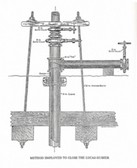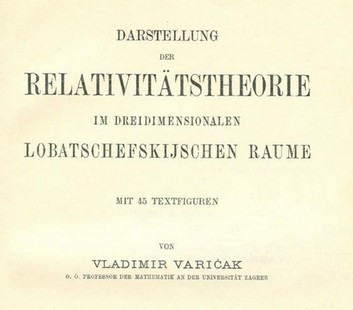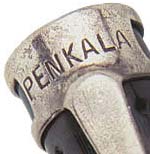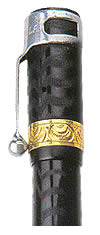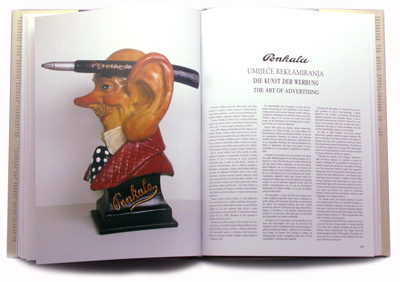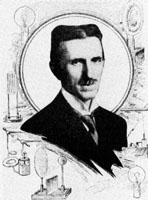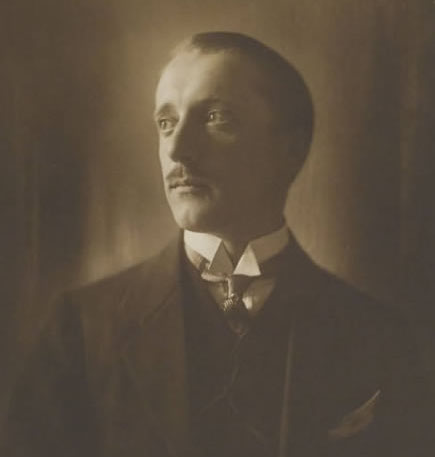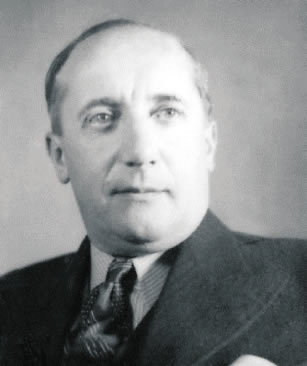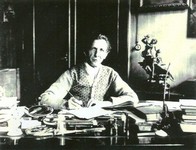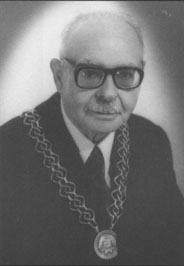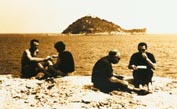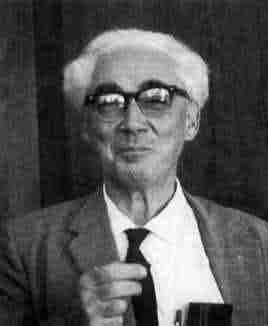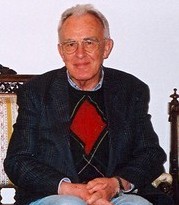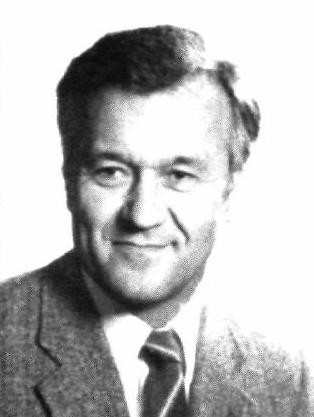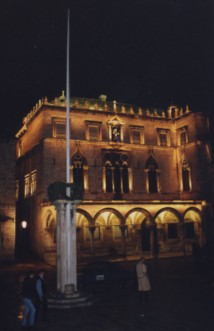Croatian Science, 15th-19th centuries
Croatian Medicine
History of Croatian Science, 20th-21st centuries
© by Darko Zubrinic, Zagreb (1995) 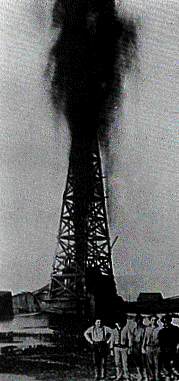 Antun
Lucic (Luchich, americanized name is Anthony
F. Lucas;
born in Split 1855, died in Washington 1921) is the father of petroleum
industry. He
discovered the first major gusher in Texas, The
Lucas gusher,
flowing at the rate of 80,000
to 100,000 barrels per day. It blew in January 1901.
About 50,000 people came to see it.
This meant the earliest massive exploitation of
oil and petroleum in the world.
Antun Lucic, known as Anthony
F. Lucas (F. = Francis is after
his grandfather
Franjo,
mariner and shipbuilder from the
island of Hvar in Croatia; see [Josko Kovacic, p. 62-64]) believed that the nearby
Spindletop hill,
near
the town of Beaumont, covered a
vast pool of oil. His company
became one of the first oil companies in Texas.
Antun Lucic was a mining engineer who completed his studies at
the Polytechnic institute in
Graz, Austria, where also his fellow countryman Nikola
Tesla later
studied.
By 1902, as many as 285 wells were operating on
Spindletop Hill and over 600 oil
companies had been chartered (the population of Spindletop sprang from
8,000
in
1901 to 60,000 in 1902, i.e. in just a year!).
In this way Captain Anthony Lucas
enabled the United States to surpass Russia as the
world's leading oil producer.
With the Lucas gusher, a black-gold rush began,
and fortune-seekers from all over the world poured into Texas.
Over time, Houston became a center of the oil
industry, and a captive of the British-dominated global oil cartel.
Antun
Lucic (Luchich, americanized name is Anthony
F. Lucas;
born in Split 1855, died in Washington 1921) is the father of petroleum
industry. He
discovered the first major gusher in Texas, The
Lucas gusher,
flowing at the rate of 80,000
to 100,000 barrels per day. It blew in January 1901.
About 50,000 people came to see it.
This meant the earliest massive exploitation of
oil and petroleum in the world.
Antun Lucic, known as Anthony
F. Lucas (F. = Francis is after
his grandfather
Franjo,
mariner and shipbuilder from the
island of Hvar in Croatia; see [Josko Kovacic, p. 62-64]) believed that the nearby
Spindletop hill,
near
the town of Beaumont, covered a
vast pool of oil. His company
became one of the first oil companies in Texas.
Antun Lucic was a mining engineer who completed his studies at
the Polytechnic institute in
Graz, Austria, where also his fellow countryman Nikola
Tesla later
studied.
By 1902, as many as 285 wells were operating on
Spindletop Hill and over 600 oil
companies had been chartered (the population of Spindletop sprang from
8,000
in
1901 to 60,000 in 1902, i.e. in just a year!).
In this way Captain Anthony Lucas
enabled the United States to surpass Russia as the
world's leading oil producer.
With the Lucas gusher, a black-gold rush began,
and fortune-seekers from all over the world poured into Texas.
Over time, Houston became a center of the oil
industry, and a captive of the British-dominated global oil cartel.
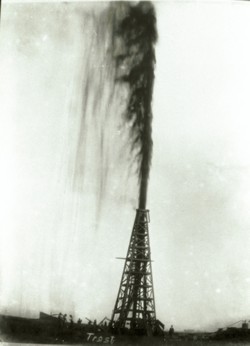
...This picture was taken four days after the oil began to gush. The well went wild for ten days, pouring approximaly 800,000 barrels of oil, and making an oil lake covering some 100 acres of land, before Captain Lucas was able to cap it. Great quantities of oil went as far as Port Arthur, sixteen miles below, on the coast. see [Soric, p 97])
Anthony Lucas (Antun Lucic) invented the so called "Christmas tree", which is the system of valves and pipes installed on the wellhead to harness a gusher. The "Christmas tree" is connected to the piping for transportation or storage of oil.
Christmas
tree invented by Anthony Lucas
in order to harness a gusher (photo from [McBeth])
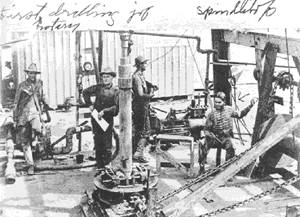
Anthony
Lucas and drilling crew,
photo from Math/Science
Nucleus for children
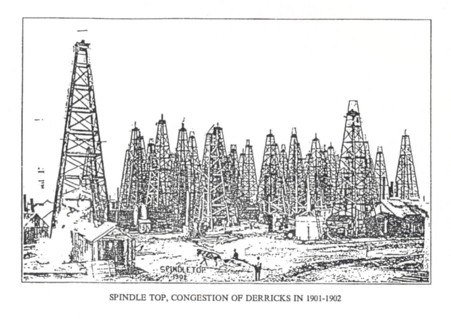
Spindle Top, congestion of derrics in 1901-1902 (photo from [McBeth])
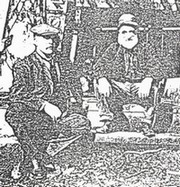
Antun Lucic (Anthony Lucas) on the left (photo from [McBeth])
The naval fuel board program adopted by the USA Government in 1901 specified that all the vessls should be equiped for the burning of oil as fuel. Railroads in increasing number were using it, and manufacturers were substituting it for coal and gas. At that time the automobile industry just began to develop, and the importance of Lucic's discovery for its further expansion was enormous.
Spindle Top in 1902. A forest of derricks, the might of America, erected around the original Lucas well.
Antun Lucic is also considered to be the founder of modern petroleum reservoir engineering. He was consulting engineer in USA, Russia, Mexico, Algeria, and Romania.
Some of the most
important inventions of Anthony F. Lucas,
that are still in use, are:
- overhead method of mining in salt mines
- surface exploration of underground mineral deposits
- application of hydraulic rotary rig in oil well drilling
- construction and application of back pressure valve
- use of clay for drilling fluids
- construction of blowout, so called "killing" equipment
- designing of well logs
As an expert in mining he was elected the life long chairman of the American Committee for Oil and Gas (later called Petroleum Division, more information). In 1936 The American Institute for Geological and Metallurgical Investigations founded a prize named after him: Anthony F. Lucas Gold Medal.
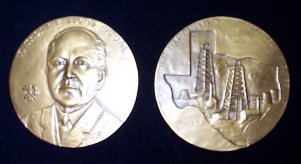
A museum with 18 m high granite obelisk was built in honour to the Lucas gusher in Spindletop. There is also 1,5 m granite monument of Lucic with inscription saying that his discovery revolutionarized industry and transport,... and changed lives of people in the whole world.
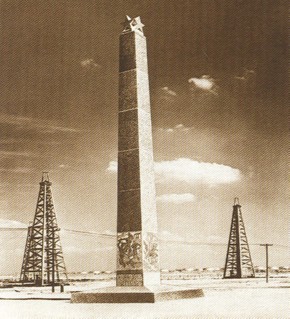
18
m high granite obelisk, built in honour
to the Lucas gusher, Spindletop, contains the following lines:
| On
This Spot on the Tenth Day of the Twentieth Century a New Era in Civilization Began |
| Petroleum has revolutionized industry and transportation; it has created untold wealth, built cities, furnished employment for hundreds of thousands, and contributed billions of dollars in taxes to support institutions of government. In a brief span of years, it has altered man's way of life throughout the world. (see [Soric, p 99]) |
In 1943 Lucas' son and daughter-in-law established charitable foundation in his name.
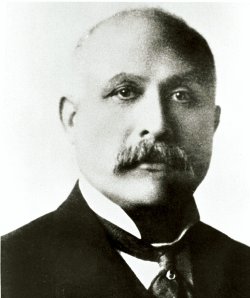
Antun Lucic (Anthony F. Lucas) is placed among 200 of most deserving Americans in the course of the entire history of the USA. There are a street and an Elementary school bearing his name in the City of Beaumont, Texas.
| Today we can proudly claim that the father of the oil industry in America, if not in the entire world, was a Croatian immigrant, Captain Anthony F. Lucas (Lucic), and that he has set into motion the modern oil industry, which, to the time of Lucas' discovery of oil, was claimed to be desert land and worthless sand. (see [Soric, p 105]) |
The importance of Antun Lucic - Anthony F. Lucas for the development of petroleum engineering worldwide is analogous to that of Nikola Tesla (also born in Croatia) for the development of electrical engineering.
As to his nationality, it is often mistakenly described as Austrian, and sometimes even Italian (like in Who is Who in America, where there is also another mistake - that he was born in Trieste). On his grave in Rock Creek, Washington, he is said to be of Illiric origin, where Illiric is a standard name for Croatian. For more information about Anthony Lucas see here, and also
- Antun Lučić - Anthony F. Lucas, otac svjetske naftne industrije (in Croatian)
- Lucas, Anthony Francis (The Handbook of Texas)
- Who Was Anthony F. Lucas? (for children)
- Anthony (Luchich) Lucas
- www.spindletop.org, where he is wrongly designated as "Austrian"
- Spindletop, Texas
- James Anthony Clark and Michel T. Halbouty: Spindletop, New York, Random House, 1952
- Adam Eterovich: Lucic discovery of oil at Spindletop, Texas
- Wikipedia: Spindletop-Gladys City Boomtown Museum
- Everett DeGoyler: Anthony F. Lucas and Spindletop, Southwest Review 30, Fall 1945
- Reyd Sayers McBeth: Pioneering the Gulf Coast; a story of the life and accomplishments of Capt. Anthony F. Lucas, New York 1918; reprinted and revised by INA Naftaplin in Zagreb, 1998, ISBN 953-96949-5-7, translation into Croatian - Antun Lucic, Zacetnik traganja za naftom na obali meksickog zaljeva, ISBN 953-96949-4-9
- Anthony F. Lucas b. Antun Lucic of Split, Croatia discoverer of the the first major gusher in Texas in 1901
- Ante Sekso:
- Darko Žubrinić:
- Spindletop: hundred years later
- VIDEOS
- Antun Lučić, Croatian Radio 6 Nov 2012, [MP3], interview of D.Ž. to Korana Kovačić-Abramović, in Croatian
- Kristina Novak Zelenika, Tomislav Malvić: Antun Lučić, začetnik novoga doba naftne industrije [PDF], predavanje održano u Matici hrvatskoj u Zagrebu 20. ožujka 2014.
- President George Bush speaking on the occasion of 100th anniversary of the Lucas Gusher (January 10, 2001)
 Dragutin
Gorjanovic
Kramberger
(1856-1936) was a professor of geology and paleontology at the
University of Zagreb. He discovered the richest collection of remains
of Diluvial Neanderthal people in the world on a site not far from Zagreb
(Krapina). He was the first man in history to have used X-rays to
analyze fossil bones (X-rays were discovered by Nikola
Tesla).
Dragutin
Gorjanovic
Kramberger
(1856-1936) was a professor of geology and paleontology at the
University of Zagreb. He discovered the richest collection of remains
of Diluvial Neanderthal people in the world on a site not far from Zagreb
(Krapina). He was the first man in history to have used X-rays to
analyze fossil bones (X-rays were discovered by Nikola
Tesla).
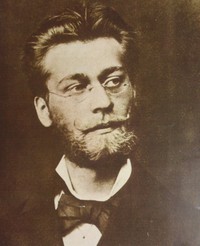
Dragutin Gorjanovic Kramberger, links
Jakov Radovcic distinguished Croatian paleonthologist
and an expert in the Neanderthal culture
Neanderthal Jewelry Is Just as Fiercely Cool as You’d
Imagine
White-tailed eagle talons from the Krapina Neandertal site in Croatia, dating to approximately 130,000 years ago (discovered alreay by Dragutin Gorjanovic Kramberger), were shown by a group of scientist in 2013 to serve as a jewelry. This is the oldest jewelry known in human history.
Ivan Dellitti (19/20th ct) from the city of Senj in Croatia discovered the method of production of acetylene gas. He also constructed the first acetylne gas lamp (carbide lamp).
Jakov Kuljiš from the island of Vis (in the fishing town of Komiža) patented his first acetyene lamp for the needs of night fishing in 1898 (lov ribe "na sviću"). Due to this patent, in 1903, he obtained a recognition in the USA by becoming a honorary citizen of this state. His patent soon started to be used in coal mines as well, as miner's lamp.
Petar Dragić, born in 1873 in the town of Crikvenica on Croatian coast, introduced the purse seine net (in Croatian: mreža plivarica), the precursor of today’s monster nets. He died in 1831 in San Pedro in the USA. His method, introduced in California (and called Californian method), enabled tuna fishig since 1917 in the open sea, and not just along the coast. This method revolutionized fishing throughout the world.
Joško Božanić: Terra nauta / Doprinos hrvatskih ribara svjetskom ribarstvu, Sušačka revija, 17(2009) 65, str. 23–37.
 Ivan Vucetic
(1858-1925), in Argentina known as Juan Vucetich, was a criminologist
and anthropologist born on the island of Hvar, in that time called
Lessina. He was one of the pioneers of the scientific
datiloscopy (identification by
fingerprints) and occupied the position of the director of the Center
for Daktiloscopy in Buenos Aires. His method of identification was in
use throughout South America. Vucetic was also the one who introduced
the notion of daktiloscopy
in 1920, now in current use worldwide.
Ivan Vucetic
(1858-1925), in Argentina known as Juan Vucetich, was a criminologist
and anthropologist born on the island of Hvar, in that time called
Lessina. He was one of the pioneers of the scientific
datiloscopy (identification by
fingerprints) and occupied the position of the director of the Center
for Daktiloscopy in Buenos Aires. His method of identification was in
use throughout South America. Vucetic was also the one who introduced
the notion of daktiloscopy
in 1920, now in current use worldwide.
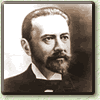
Ivan Vucetic devised an original instrument for classification of fingerprints called dactilonome.
The police school in La Plata is bearing his name: Escuela de policia Juan Vucetich, as well as the Argentinean Police museum, and even a High Technical Institute Juan Vucetich. See his biography
Vida y obra de Juan Vucetich in Spanish,
offered by Argentinean Escuela de Policia, and in English.Nearly 350,000 Croats live in Argentina today. It is interesting that in 1933 the Croatian community in Argentina collected about 50,000 signatures asking for the right of the Croats to live in the free and independent state. Similarly in the USA.
For more information see Ivan Vucetic, Juan Vucetich 1858.-1925. [PDF], concept author & event coordinator Ljerka Galic, Croatian Heritage Foundation, Zagreb 2008., ISBN 978-953-6525-47-8
The scientific activity of Vladimir Varicak (1865-1942), professor of mathematics at the University of Zagreb, was mainly in non-Euclidean geometry and its applications to Einstein's theory of relativity. His lecture delivered in 1911 at the German Mathematical Society in Karlsruhe has been published in 1912 in Jahresberichte der Deutschen Mathematiker Vereinigung, and translated from German into Polish (Warszaw, 1913), Russian (St. Petersburg, 1914), French (Paris, 1914).
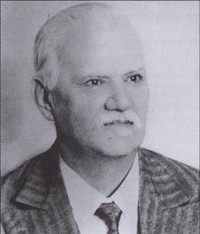
His most important work is the monograph Darstellung der Relativitätstheorie im dreidimensionalen Lobatschefskijschen Raume, Zagreb, 1924, which has been been cited by many authors to these days. In 2007, the book has been translated into English (Vladimir Varićak: Relativity in three dimensional Lobachevsky space, Publisher A. F. Kracklauer, 2007, ISBN-13: 978-1847533647).
The original and arguably most complete book on the
nonEuclidean formulation of relativity theory. Published in 1924 in
German, it is now rare, but still current. Recent work in this area has
greatly increased its utility; it should be of interest to all
concerned with theoretical physics or application of modern geometry. Source.
The results of his
work
have been cited also in Wolfgang Pauli's Relativitätstheorie.
Vladimir Varićak was the main contributor to the the
theory of rapidity (in the Theory of Relativity) in his writings
from 1910 to 1924.
One of his students at the University of Zagreb was Vilim
Feller, that
is, William
Feller,
a famous Croatian -
American mathematician. Vladimir Varicak was a Dean of the Mudroslovni
fakultet (Faculty of Philosophy), as well as a Rector of the University
of Zagreb, and since 1903 he was a full member of the Academy of
Sciences and Arts in Zagreb. Since 1911, Varicak was also very
interested in the life and work of Rudjer Boskovic, distinuished Croatian scientist
from the 15th century. He was a collaborator of Croatian
Encyclopaedia (A-E), which contains 4 four of his articles (while
it is to be assumed that he has prepared many more).
A few citations (source Sibe Mardesic: Matematika u Hrvatskoj - Mathematics in Croatia):
Ich will nun des naeheren auf die Parallele zwischen der nichteuklidischen Geometrie und der relativitaetstheorie zu sprechen kommen. Diese Parallele ist Herrn unsympathisch. Ich darf darum wohl an die Arbeiten von Varicak erinnern, aus denen zu schliessen ist, dass jeder Formel der Einstein-Minkowski-schen Welt dreier, reeller Raum - und einer imaginaraen Zeitkoordinaten eine Formel in einer nichteuklidischen Weit von vier reellen Raum-Zeitkoordinaten entspricht. Ich hatte allerdings mit meiner parallele etwas ganz anderes gemeint, als diese mathematisch sehr interessante Entdeckung aussagt.
E. Gehrcke: Nochmals ueber die Grenzen des relativitaetsprinzips, Verhandlingen der Deuthschen Physikalischen Gesellschaft, 13 1911, str. 996.
Yet just now, 1912, this space of ours is being proved non-euclidean by the principle of relativity. Says Vladimir Varicak in a wonderful lecture. "Ueber die nichteuklidische Interpretation der Relativtheorie": "I postulated that the phenomena happened in a Lobachevski space, and reached by very simple geometric deduction the formulas of the relativity theory. Assuming noneuclidean terminology, the formulas of the relativity theory become not only essentially simplified, but capable of a geometric interpretation wholly analogous to the interpretation of the classic theory in the euclidian geometry. And this analogy often goes so far, that the very wording of the theorems of the classic theory may be left unchanged".
G.B. Halsted, Non-Euclidean Geometry, Science, New York, 1913, str. 597.
This is an interesting and lucid analysis of Lobatschiefsky space displaying its properties in such a form as to present their intimate relationship with the ideas of relativity.
Nature, London, 6. Dec. (1924) 820.
I problemi posti dalla fisica teoretica sono all'ordine del giorno specialmente per quanto riguarda la teoria della relativita di Einstein. In questa importane pubblicazione l'illustre professore di matematica dell'Universita di Zagabria, ha trattato l'arduo argomento con una intellegibita incontestabile, con logica rigorosa e con metodo scientifico convincente.
Bollettino delle opere scientifiche, Bologna, agosto (1926) 12.
Vladimir Varicak was the third president of the Croatian Shorthand Society (Hrvatsko stenografsko
društvo) in Zagreb from 1918 to 1930. Many thanks to Mr. Josip Hanjš (president
of the Croatian Shorthand Society) for this information
(2015). Two sketches of Varićak's letters to Albert Einstein are
preserved, but nobody can decipher their content, since Varicak wrote
them using a little known Gabelsberg's shorthand system.
Eduard (Slavoljub) Penkala (1871-1922), born in Slovakia to a Polish/Dutch family, became naturalized Croat when after his marriage his family immigrated to Zagreb. He invented the mechanical pen in 1906 and fountain pen in 1907 which are bearing his name "penkala" and now they are in everyday use.
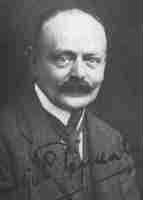
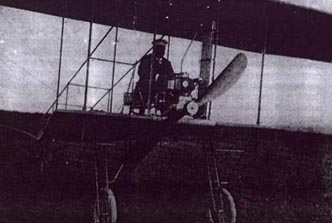
His first invention was a resin bottle filled with hot water, called Termofor (hot water bottle), used in bed as "central heating" during cold nights.
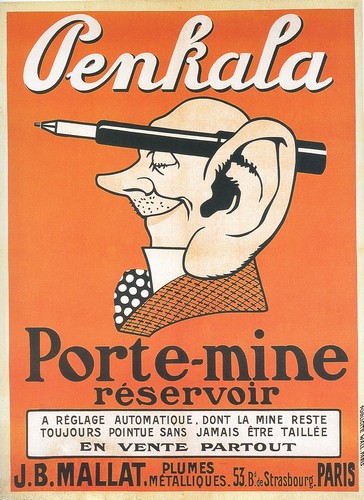
Penkala invented a new plastic mass substance called ebonite, and used it for production of gramophone records. He then signed a contract with the Edison-Bell company, England, and a new company Edison-Bell-Penkala Ltd. was founded in Zagreb which started the production of gramophone records based on his original technology.

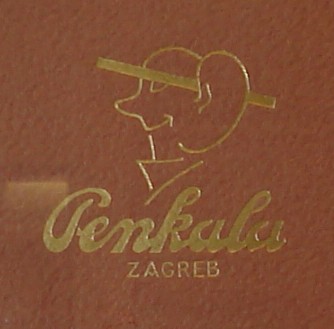
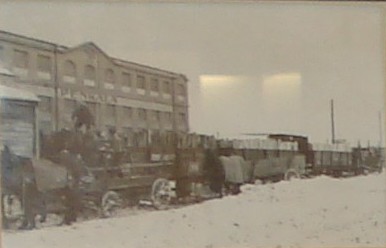
The Penkala factory in Zagreb in 1912, Branimirova street, had about 300 employees, with canteen, kindergaten, swimming pool, and even a football club Penkala. It was among largest factories for office equipment in the world.
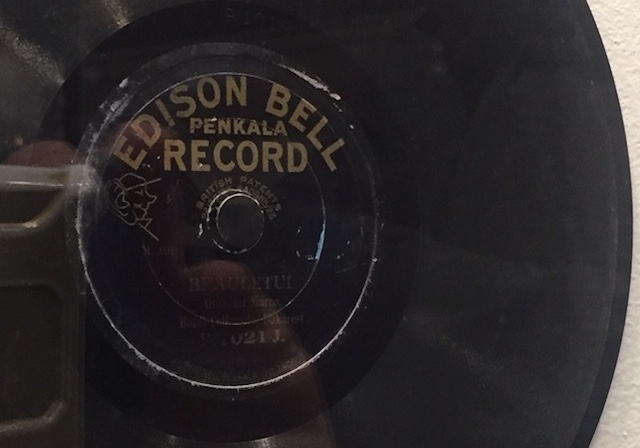
Edison
Bell Penkala gramophone record, exhibited in the Sajko Museum
Collection, Novska, Croatia
- Gojko Nikolić: Eduard Slavoljub Penkala, Privlačica, Vinkovci 2021.
- Leonard Eleršek: Homo Volans / rani hrvatski avijatičari 1554.-1927., 2. dopunjeno izdanje, Zagreb 2010.
Another constructor of airplanes was Ivan Saric, who had been flying in Subotica in 1913 (only 10 years after brothers Wright, and three years after Penkala in Zagreb).
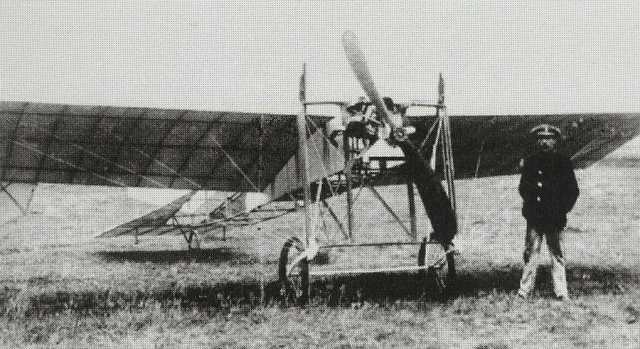
Ivan Saric with his airplane, source maketarstvo.net
Stanko Hondl (1873-1971), professor of physics at the University of Zagreb, has a great merit for popularizing Einstein's theory of relativity in Croatia. One of his students was William Feller, outstanding Croatian - American mathematician.
Stjepan Jurinic
(1855-1947), professor of zoology at the University of Sofia, Bulgaria,
became a rector of that university in 1911/12, as the only foreigner
in history. In his honor, a spider Coelotes jurinitschi (Agelenidae)
was named after him in 1915. In 1893, he founded a Croatian society in
Sofia called Hrvatska zadruga.
He spent the last 20 years of his life in the town of Samobor, Croatia.
A great merit in popularizing astronomy and technical sciences in Croatia has Oton Kucera (1857-1931) with his numerous published books and articles. See [ppt1] and [ppt2] (in Croatian; many thanks to Tatjana Kren and Branko Hanzek for permission). Upon the suggestion of Oton Kucera, an asteroid (589), discovered by his colleague August Kopff in Heidelberg in 1906, was named Croatia. It is interesting that a granddaughter of Oton Kucera has the first name Kroacija. We mention in passing that there is another asteroid, named after William Feller, distinguished Croatian - American mathematician (by NASA, in 1996).
Jaroslav Havlicek was born in Croatia, in Garesnica (1879 - 1950), of the Czech nationality. His steam boiler fed by coal powder represented a revolution in building large power supplies. A reputed journal Applied Mechanic's Review included him among 10 most important personalities in the history of energetics (besides Volta, Fermi, Edison, Tesla). His major inventions were completed during his stay in Brno (Czechia). Since 1919 he was a professor in Zagreb.
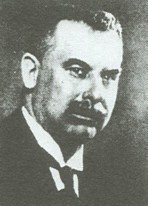
![]()
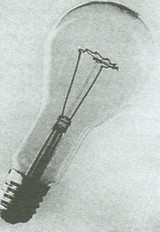
Franjo Hanaman (1878-1941), chemist and metallurgist, distinguished professor of the University of Zagreb, invented together with Aleksandar Just the first economical electric bulb with wolfram filament. During 1910, when Hanaman sojourned in the USA, his patent rights have been bought by the General Electric Co. During his visit, he met Nikola Tesla.
William David Coolidge, american physicist and since 1932
director of the scientific laboratory of General Electric Co, wrote on
the occasion of Hanaman's 50th birthday and the then 25th anniversary
of his first patent the following in his letter sent to Professor
Vladimir Njegovan (see [M. Kastelan-Macan, p. 53]):
Allow me, however, to take this opportunity to express my keen appreciation of the pioneer work of Professor Hanaman in the tungsten lamp field. To him and to Dr. Just belongs the honor of being the path finders who led the world to a wonderful new light.
Let me also pay my tribute to
Professor Hanaman's sterling character and lovable nature. I feel
fortunate indeed in being able to count him as one of my very good
friends.
For more detailed information, see Marija Kastelan-Macan: Franjo Hanaman, FKIT, Zagreb 2017.
Billions of electric bulbs worldwide, with wolfram filament,
have been produced during the past hundred hears (from the beginning of
20th to the beginning of 21st centuries), based on the patents of
Hanaman and Just.
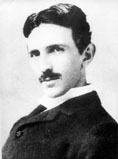 Nikola
Tesla
(1856-1943), born in Croatia (at that time within Austria-Hungary), is
well known and need not be particularly introduced.
He completed his
elementary and secondary school education in Croatia (in Gospic and
Karlovac), and studied in Graz and Prague. He is the father of
alternating electrical current technology and the three-phase system.
He is equally known by his contribution to the high frequency
technology and wireless communications. The impact of Tesla's numerous
inventions (112 patents during his work in the USA) on the development
of modern civilization is immeasurable. The unit for magnetic
induction Tesla, was named
after him (Conference general des poids et mesures, Paris, 1960). He
refused to receive the Nobel prize which he had to share with T.A.
Edison.
Nikola
Tesla
(1856-1943), born in Croatia (at that time within Austria-Hungary), is
well known and need not be particularly introduced.
He completed his
elementary and secondary school education in Croatia (in Gospic and
Karlovac), and studied in Graz and Prague. He is the father of
alternating electrical current technology and the three-phase system.
He is equally known by his contribution to the high frequency
technology and wireless communications. The impact of Tesla's numerous
inventions (112 patents during his work in the USA) on the development
of modern civilization is immeasurable. The unit for magnetic
induction Tesla, was named
after him (Conference general des poids et mesures, Paris, 1960). He
refused to receive the Nobel prize which he had to share with T.A.
Edison.
He spent more than one fifth
of his life in Croatia (until his age of 18; at that time,
Croatia was a legitimite part of Austrian Empire), and nearly two thirds of his life in the USA
(almost sixty years).
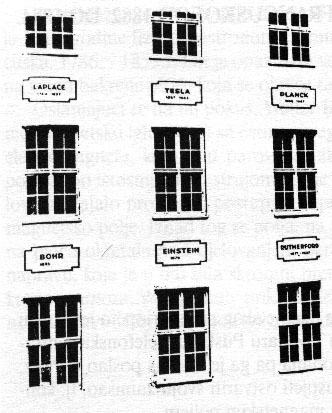 Windows
of the building of Electricité
de Strasbourg in France,
where Tesla had worked for some time, have inscriptions with
names of outstanding scientists. There you can see his name surrounded
with
Laplace, Planck, Bohr, Einstein and Rutherford (click on the
left).
In front of the building of International Union for Telecommunications
in Geneva there is a statue of Nikola Tesla.
When his mother died, he paid a visit to Croatian capital
Zagreb in 1892, where
he gave a lecture about alternating current.
On that occasion he said:
Windows
of the building of Electricité
de Strasbourg in France,
where Tesla had worked for some time, have inscriptions with
names of outstanding scientists. There you can see his name surrounded
with
Laplace, Planck, Bohr, Einstein and Rutherford (click on the
left).
In front of the building of International Union for Telecommunications
in Geneva there is a statue of Nikola Tesla.
When his mother died, he paid a visit to Croatian capital
Zagreb in 1892, where
he gave a lecture about alternating current.
On that occasion he said:
As
a son of my homeland I feel it is my duty to help the city
of Zagreb in every respect with my advice and work
(Smatram svojom duznoscu da kao rodjeni sin svoje zemlje pomognem
gradu Zagrebu u svakom pogledu savjetom i cinom; photo),
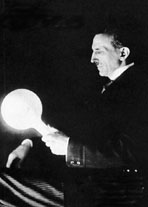 and
suggested to build alternating current power plant. There is no doubt
that by saying "homeland" he meant Croatia. In 1931, at the age of 75,
Tesla received birthday greetings from Lee
de Forest and Albert
Einstein. His monument carved by Ivan
Mestrovic, who knew him
personally, can be seen in Zagreb.
Another monument, carved by Croatian sculptor Frano
Krsinic, can be seen near Tesla's hydro power plant on Niagara Falls. A
part of Technical Museum in Zagreb is dedicated to Nikola Tesla.
According to some recreational sources on WWW, four greatest geniuses
in the history of Mankind are Gutenberg, Edison, da Vinci, and Tesla
(in this order). There is not doubt that with a different homeland
Tesla's position on the list would be much higher. Even today, so many
years after Tesla's death (1943), his numerous manuscripts are kept as
top secret by the Ministry of Defense of the USA (see Margaret Cheney, Tesla:
Man Out of Time, Prentice Hall,
1981; Vladimir Muljevic, Nikola
Tesla, slavni izumitelj,
Hrvatska zajednica tehnicke kulture, Zagreb, 2000, p. 75.)
and
suggested to build alternating current power plant. There is no doubt
that by saying "homeland" he meant Croatia. In 1931, at the age of 75,
Tesla received birthday greetings from Lee
de Forest and Albert
Einstein. His monument carved by Ivan
Mestrovic, who knew him
personally, can be seen in Zagreb.
Another monument, carved by Croatian sculptor Frano
Krsinic, can be seen near Tesla's hydro power plant on Niagara Falls. A
part of Technical Museum in Zagreb is dedicated to Nikola Tesla.
According to some recreational sources on WWW, four greatest geniuses
in the history of Mankind are Gutenberg, Edison, da Vinci, and Tesla
(in this order). There is not doubt that with a different homeland
Tesla's position on the list would be much higher. Even today, so many
years after Tesla's death (1943), his numerous manuscripts are kept as
top secret by the Ministry of Defense of the USA (see Margaret Cheney, Tesla:
Man Out of Time, Prentice Hall,
1981; Vladimir Muljevic, Nikola
Tesla, slavni izumitelj,
Hrvatska zajednica tehnicke kulture, Zagreb, 2000, p. 75.)
Technical Museum in Zagreb, about Tesla's inventions (rotating egg, Tesla's three phase generator, Tesla's transformer, Tesla's remote control boat, etc).
It seems that Nikola Tesla was the first one to discover the electron. This can be seen in his article "Reply to J.J. Thomson's note", published in Electrical Engineer, New York, August 26, 1891. In this article Tesla claims that his experiments prove the existence of charged particles ("small charged balls"), while J.J. Thomson denied this. It was only five years later that Thomson proved the existence of electron using another experiment. See [Centuries of Natural Sciences in Croatia 2, p. 62, article by academician Vladimir Paar, outstanding Croatian physicist].
The Supreme Court of the USA overturned Marconi's patent of modern radio in favor of Nikola Tesla in 1943, soon after his death. Tesla died in New York, in circumstances close to poverty.
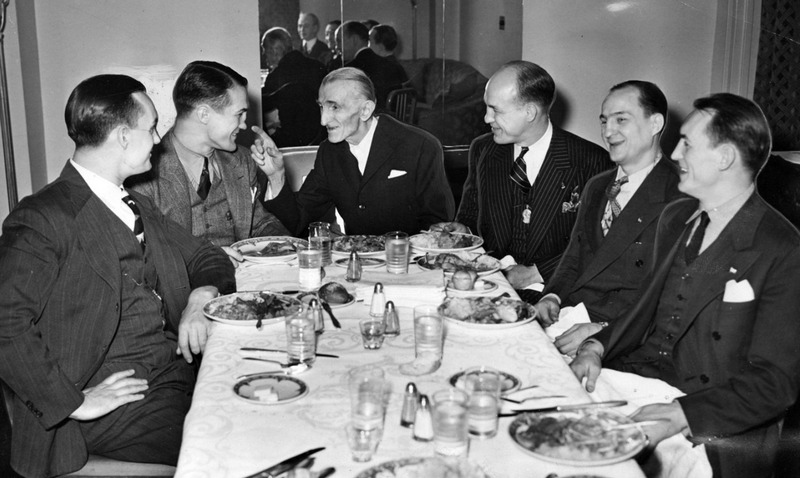
as well as his brothers, after one of his successful defences of the title of the welter-weight world champion.
Source newsinteractive.post-gazette.com, from the photo archives of the Pittsuburgh Post-Gazette.
From left to right: Joe Zivic, Fritzie Zivic, Nikola Tesla, Jack Zivic, Pete Zivic i Eddie Zivic.
Their father, Josip Živčić, was born in Bosiljevo in Croatia.
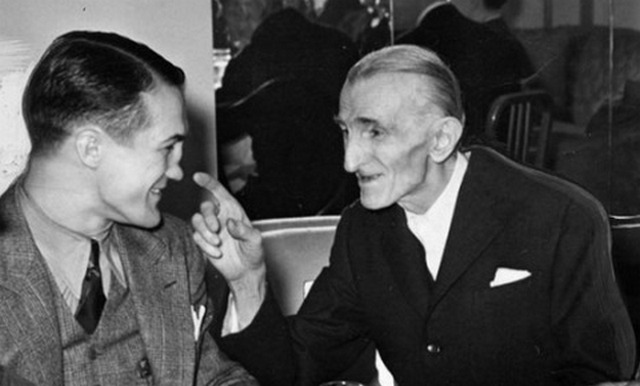
The Croat Comet Fritzie Zivic (originally Živčić) and enthused Nikola Tesla at the age of 85.
Fritzie Zivic was inducted to the International Boxing Hall of Fame in 1993.
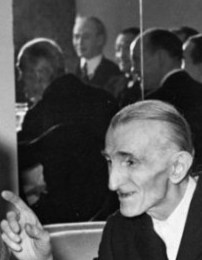
There are at least two more persons at the table, noticeable in the mirror behind Tesla.
The last person could be Charles F. Scott (1864-1944), Tesla's assistent already since 1890s.
Scott wrote a very nice article, published in Zagreb in 1929, describing Tesla's work
on the development of his polyphase system. On the right of Charles Scott seems to be Fiorello LaGuardia,
the most famous Mayor in the history of New York. He was fluent in Croatian language,
that he has learned during his sojourn in the city of Rijeka from 1903 till 1906.
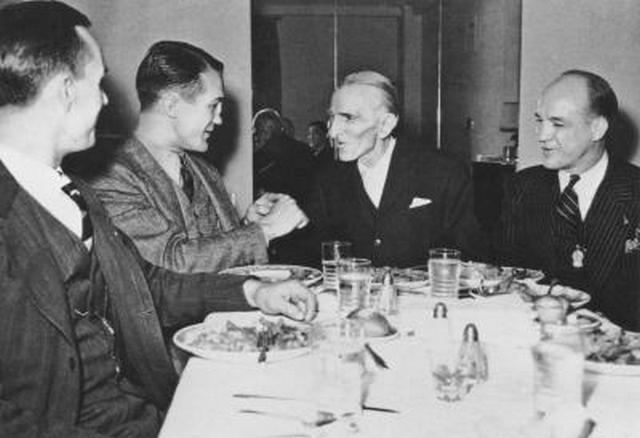
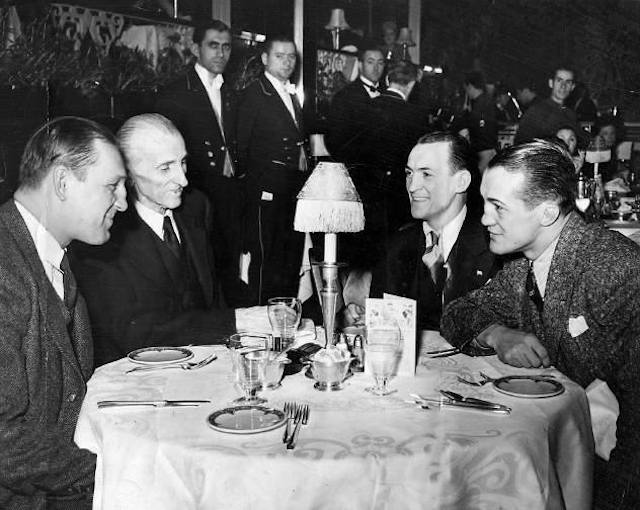
Nikola Tesla (2nd from the left) with three of the Zivic brothers: Eddie, Pete and Fritzi (on the right). Source.
Nikola Tesla attended Higher Real School in the town of Rakovac (now a part of the city of Karlovac) in Croatia, from 1870 to 1873, when he was between 14 and 17 years of age, and where the lectures were still held in German language (except for History and Religion, which were taught in Croatian). Among his professors, especially important was Martin Sekulić, who lectured Electrical Engineering and Mathematics. Furthermore, Sekulić was also an active researcher, due to which in 1873 he was elected as a corresponding member of the Academy of Sciences and Arts in Zagreb, in the Department of Mathematics and Natural Sciences. Sekulić also founded physical laboratory at the Real School, which in the early 1870s had an exceptionally rich collection of as many as 579 instruments. In his Authobiography, Nikola Tesla mentioned Sekulić’s ingenious experiments in the school, which enthused him at an early age in choosing Electrical Engineering as his lifelong profession. Among school subjects that Tesla listened to was his mother tongue Kroatische Sprache (Croatian language). It is surprising that at the mentioned school he had up to 9 hours of Mathematics lectures weekly. All this indicates that Tesla had very good teachers and obtained excellent high school education. In the existing contemporary monographs and books dealing with Tesla, the role of Martin Sekulić in the formation of young Nikola has been almost entirely neglected.
- Darko Žubrinić: Školovanje Nikole Tesle u Hrvatskoj i njegov profesor Martin Sekulić [PDF] (sažetak), u Povijest i filozofija tehnike / radovi EDZ sekcije 2017. godine / Benčić, Zvonko ; Moser, Josip (ur.). Zagreb : Kiklos, 2017. Str. 81-117.
Teaching of Croatian Language, Mathematics and Physics in the time of Education of Nikola Tesla in Croatia
During the schooling of Nikola Tesla at the High Real School in Rakovac (today a part of the city of Karlovac), the crucial role had his professor Martin Sekulić. Tesla wrote about this in his Authobiography: I had become intensely interested in electricity under the stimulating influence of my Professor of Physics, who was an ingenious man and often de-monstrated the principles by apparatus of his own invention. In this article, we present the educational process at the High Real School in Rakovac when Nikola Tesla attended it in the period of 1870. – 1873. (when he was 14-17), with a special emphasis to the teaching of Croatian language, Mathematics and Physics. The basis for this article is an original yearbook of The Imperial and Royal High Real School in Rakovac in Croatian-Slavonian Military Frontier for The School Year 1872/3 i 1873/4, published in Croatian and German languages in the city of Zagreb in 1874.
- Darko Žubrinić:
- Schooling of Nikola Tesla in Croatia and his teacher Martin Sekulić
- Nikola Tesla and Croatians in the USA
- Mistakes about Nikola Tesla
- Nikola Tesla u
Zagrebu 1892.
- Nastava hrvatskog jezika, matematike i fizike tijekom školovanja Nikole Tesle u Hrvatskoj [PDF], u Povijest i filozofija tehnike / radovi EDZ sekcije 2018 godine / Benčić, Zvonko (ur.). Zagreb : Kiklos, 2018. Str. 293-317
- Tesla AC technology for the Adams Power Plant near Niagara Falls
- Nikola
Tesla's assistant Charles F. Scott
- Mario Essert, Tihomir Žilić, and Darko Žubrinić: Differences between two versions of Tesla's autobiography
- Nikola Tesla, numerous links
- Nikola Tesla,
the man who invented the modern world
for example Tesla has indisputable priority in inventions of modern radio, X-rays, vacuum tube amplifier, radar, first robots, etc. - The Complete Patents of Nikola Tesla
- Nikola Tesla, forgotten American scientist, by John W. Wagner
- My Inventions, The Autobiography of Nikola Tesla
- [Janko Herak,
pp. 43-51]; in his article "Nikola Tesla / Scientist and Inventor -
Discovery of X-rays", the author Professor Stanko Popović (Fellow of
the Croatian Academy of Sciences and Arts, expert in chrystallography),
accompanies a well known fact that Tesla's father was a priest of the
Greek Orthodox Church with the following comment (on p. 43, footnote No
3)" The Serbian Orthodox Church did not exist in the Austro-Hungarian
Empire, and therefore, it did not exist in Croatia. That Church was
founded in Croatia in 1920 by autocractic edict of Aleksandar, the Heir
to the trone of the Kingodom of Serbs, Croats and Slovenes, established
in 1918, later renamed Yugoslavia. That year Croatia became the part of
that Kingdom.
It is interesting that in Bartol Kasic's dictionary of Croatian language (16/17 centuries) one can find the name of "tesla", meaning adze. The word tesla (adze) is without any doubt related to Croatian words tesar - carpenter, tesati - to trim (a log), to dress (a stone).
Among scientists studying seismology the famous Moho-layer (or Moho-discontinuity) of the Earth is well known. It was named after the great Croatian geophysicist Andrija Mohorovicic (born in Volosko, 1857-1936), professor at the University of Zagreb. His discovery was essential for understanding the inner structure of the Earth and the behavior of seismic waves. Together with the theory of forces due to Rudjer Boskovic, this is probably the greatest achievement in the history of Croatian science.
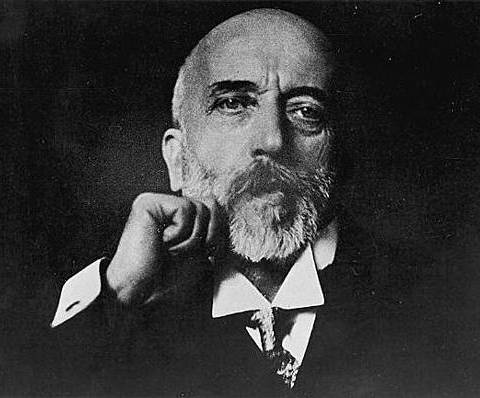
Let us cite a part of his biography from Willard Basom's monograph A hole in the Bottom of the Sea, The story of the MOHOLE project, 1959/61, Doubledays, USA (p. 143):
...As a boy of 15 he spoke Italian, French, and English as well as his native Croatian, later added German, Czech, Latin, and old Greek. He studied physics at the University of Prague under some famous professors including E. Mach and did his graduate work at the University of Zagreb, from which he obtained a Ph.D. In 1894 Dr. Mohorovicic became Director of the Institute for Meteorology and Geodynamics and Professor at the University of Zagreb in 1897, where he remained until his retirement in 1921. His special interest was the precise measurement of time for both astronomical and seismical events, but his reputation mainly rests on his classic paper in the field of seismology, The Earthquake of October 8, 1909, which contains the news of his discovery of a major discontinuity at a depth of 55 kilometers. This discontinuity, now generally known as the Moho in his honor, defines the crust of the earth. Professor Mohorovicic died in 1936 in circumstances approaching poverty.
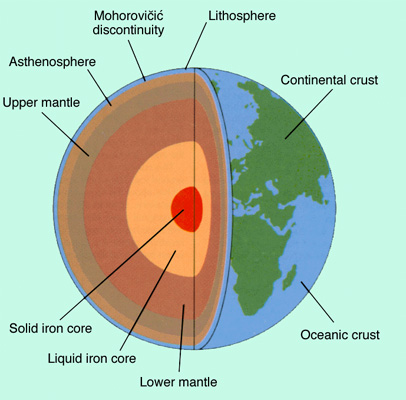
Photo from an article by Mete Oner: Deepest borehole ever drilled
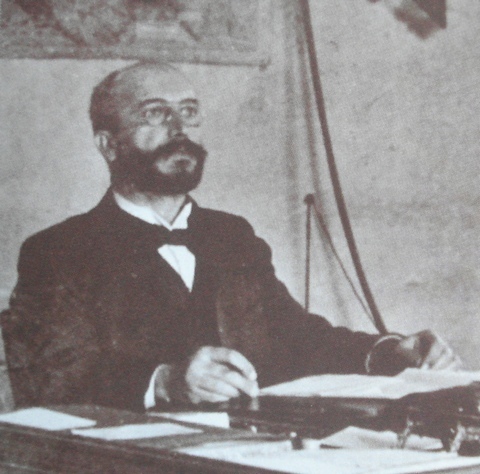
Andrija Mohorovicic around 1902,
photo from 150 godina Geofizickog zavoda, ur. Mirko Orlic, Zagreb 2011.
Two Croatian names appear on the map of the Moon. The name of Rudjer Boskovic was given to a mountain on the visible side, and the name of Andrija Mohorovicic to a mountain on the dark side of the Moon.
The name of MOHO for the Mohorovicic distontinuit was introduced by professor Harry Hammond Hess (1906-1969) from The Univeristy of Princeton, New York, USA (elected to the National Academy of Sciences in 1952 and the American Academy of Arts and Sciences in 1968).
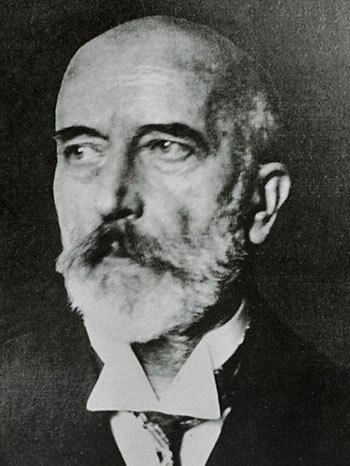
Andrija Mohorovičić
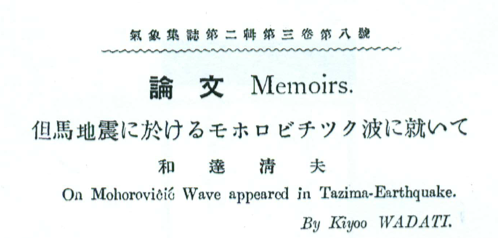
The title of the 1925 article published by Kiyoo Wadati, distinguished Japanese sesmologist:"On Mohorovičić Wave appeared in Tazima-Earthquake", Journal of the Meteorological Society of Japan (web). Ser. II Vol. 3(1925) No. 8, 201-211.
See [PDF]. Many thanks to Yoko Nishii for kindly providing the links pointing to the article and the journal.
From the abstract of the article:
"Some seismograms of the destructive earthquake occurred on May 23rd,
1925 in North Tazima district, show distinctly so-called the
Mohorovičić wave. One of them is shown in Fig. (4) magnified from the
seismograms of Wiechert's 200kg. seismograph installed at the Central
Meteorological Observatory in Tokyo. (Epicenter distance about 450km.)
..."
Note that the name of Mohorovičić
appears already in the title.
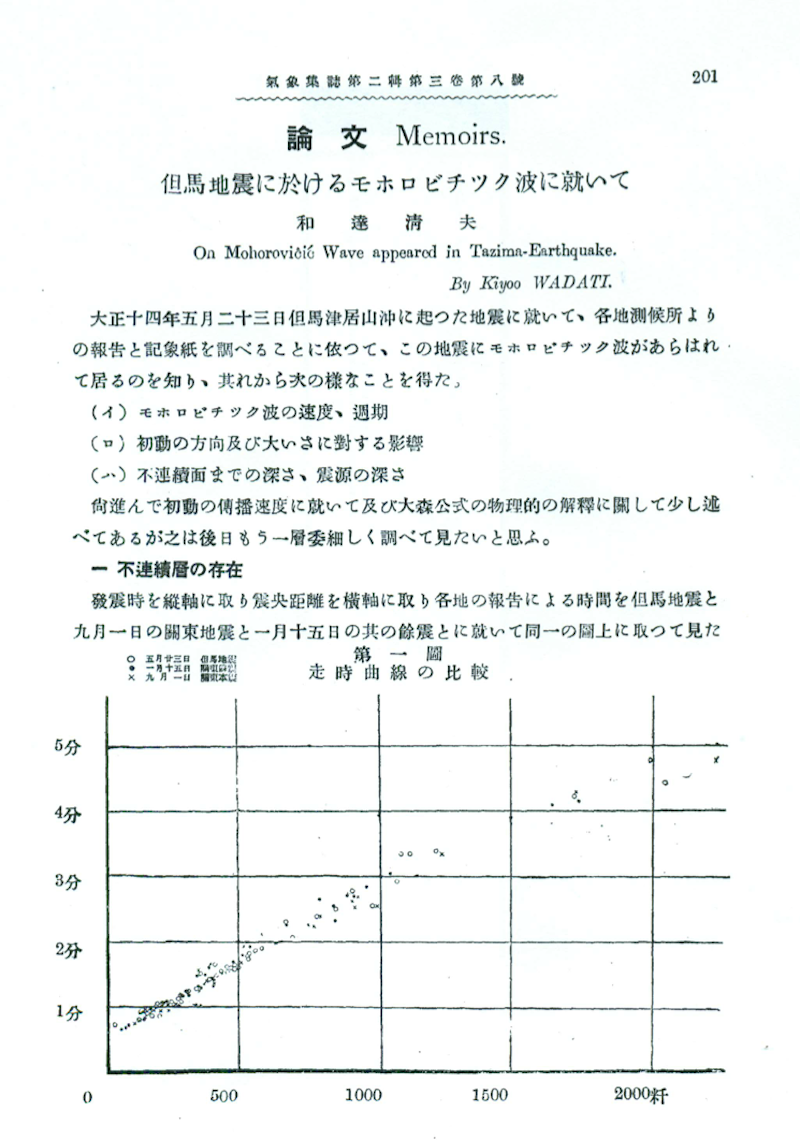
Many thanks to Professor Mirko
Orlic (of the Croatian Academy of Sciences and Arts) for this
photo.
Kiyoo Wadati also published
another article related to the work of Mohorovičić: “On the Mohorovicic
Wave Observed
in Japan.” Geophysical Magazine 1 (1927): 87–96.

Here is the name of Andrija Mohorovičić written in Japanese, provided
by the courtesy of Yoko Nishii.
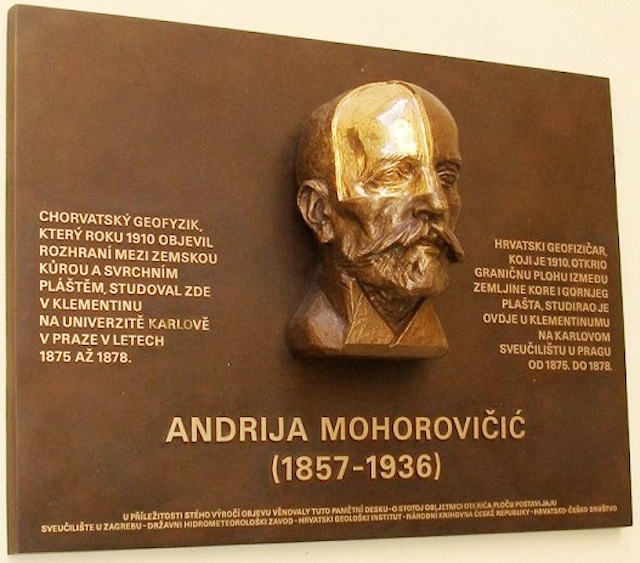
Memorial plaque in the Prague dedicated to Andrija Mohorovičić, where
he has studied at the Charles University (among his professors was
famous Ernst Mach). Photo from Marijan Lipovac
and Vlatka Banek: Hrvatsko-češko
društvo / prvih 25 godina, Zagreb 2017, by the courtesey of Mr.
Lipovac.
As a student in the Prague, Andrija
Mohorovičić was a founder and secretary of the Society of Croatian
Students Hrvat (Hrvat =
Croat), established in 1876.
Andrija Mohorovicic, links
Mohorovic made pioneering observations of rotor-type circulation (or atmospheric rotor, with horizontal axis) in bora. For more information see the following article:
- Vanda Grubisic and
Mirko
Orlic: Early observations of rotor clouds
by Andrija Mohorovicic [PDF],
Bulletin of the American Meteorological Society (vol. 88, 2007, str.
693-700) [many thanks to dr. Orlic, University of Zagreb, for the PDF]
Other references related to Andrija Mohorovičić:
- Video of a public lecture by Mirko Orlic and his colleagues (in Croatian).
- Kroz koru do plašta / Nove spoznaje o Andriji Mohorovičiću (1857.-1936.), Hrvatska akademija znanosti i umjetnosti (Croatian Academy of Sciences and Arts), Zagreb 2019.
- Život i rad prof. dr. Andrije Mohorovičića, Kalendar Hrvatski glas (Croatian Voice Calender, Petar Stankovic ed.), 1963, Canada, pp. 77-83. Many thanks to Mr. Marijan Lipovac for the copy.
Stjepan Mohorovicic (1880-1980), professor of physics at a grammar school in Zagreb, made a very important theoretical discovery ([Janko Herak, pp. 35-43]) of the positronium (rotational pair of electron and positron) as early as in 1934, published in "Astronomishe Nachrichten", a prestigeous German scientific journal (precise reference is A. Mohorovicic, Astron. Nachr. 253, 94 (1934)). Its existence was confirmed experimentally in 1951 by Martin Deutsch, MIT physicist (and a member of Manhattan Project).
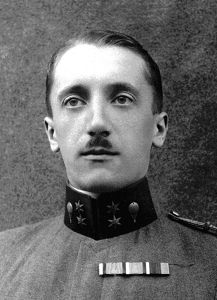
Still earlier, in 1927, Stjepan Mohorovicic predicted the existence of the MOHO-layer on the Moon, analogous to that of the Earth, discovered by his father Andrija Mohorovicic. Its existence has been proved in 1969 during the famous Apollo 11 flight to the Moon. Seismic measurements have been carried out by Neil Armstrong and Edwin Aldrin, the first humans to land on the Moon.
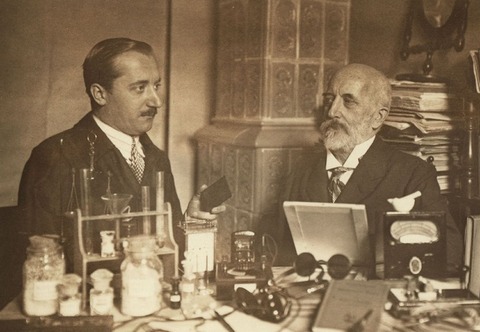
Stjepan
Mohorovicic with his father Andrija Mohorovicic.
Andrija Mohorovicic and his son Stjepan have founded the Zagreb School of Seismology.
Lit.
- Mirko Orlić and Iva Vrkić: Bibliography of papers, reports and books published by Stjepan Mohorovičić [PDF], Geofizika, Vol. 32 Zagreb 2015, pp. 93-127
- Branko Hanžek: Dr. Stjepan Mohorovičić (1890. – 1980.) – promicatelj povezanosti hrvatske optičke industrije sa školstvom [PDF], Cris, god. XXIV., br. 1/2022., str. 152–161.
- Stjepan Mohorovicic
As an explorer, Dragutin Lerman (1863-1918) was a member of Stanley's expedition to Congo (Zaire), and a commissary (Commissaire General) of the Belgian government in Congo. By the end of his career the Belgian king Leopold conferred the knighthood of Lion's order on him. And the famous Stanley wrote: "The Croat is energetic, cautious, in high spirits..." It is interesting that in 1882 Lerman discovered huge waterfalls on the river of Kwil, which he named the Zrinski Waterfalls (Zrinski chutes), in honour of a famous Croatian family of rulers. He donated about 500 artifacts related to various traditional African cultures to the Ethnographic museum in Zagreb.
Misionar na Gornjem Nilu, Damir Zoric
Brothers Mirko (Karlovac 1871-Peru, 1913) and Stevo Seljan (Karlovac 1876-Ouro Preto, Brazil 1936) spent several years in Ethiopia carrying out geomorphological, climatological and ethnographic investigations.
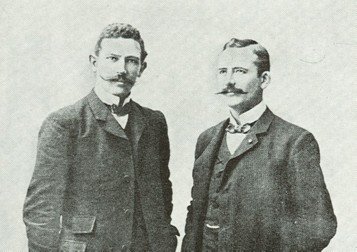
They occupied an important position at the court of Ethiopian Emperor Menelik II. Later they went to South America, where they founded the society La Mission Cientifica Croata Mirko y Stevo Seljan and organized some expeditions, especially in Peru, Chile and Brazil (in the region of the Amazon).
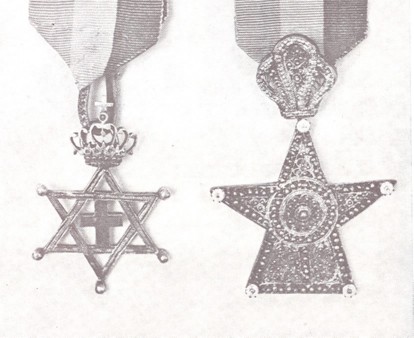
Ethiopian Star and The Solomon's
Knight Cross,
decorations awarded by Emperor Menelik II to brothers Seljan
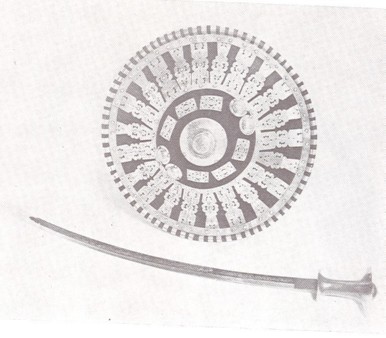
A gift of Emperor Menelik II to
Mirko
Seljan, with inscription on gold plated sword:
Ethiopia raises its
hands to God (in Amharic)
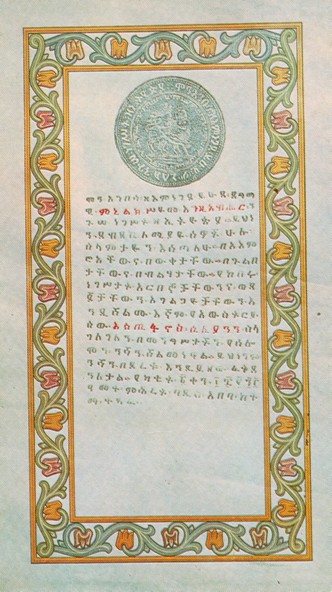
A charter bestowed by Emperor
Menelik II to
brother Mirko Seljan
with inscription in Amharic (better photo is below)
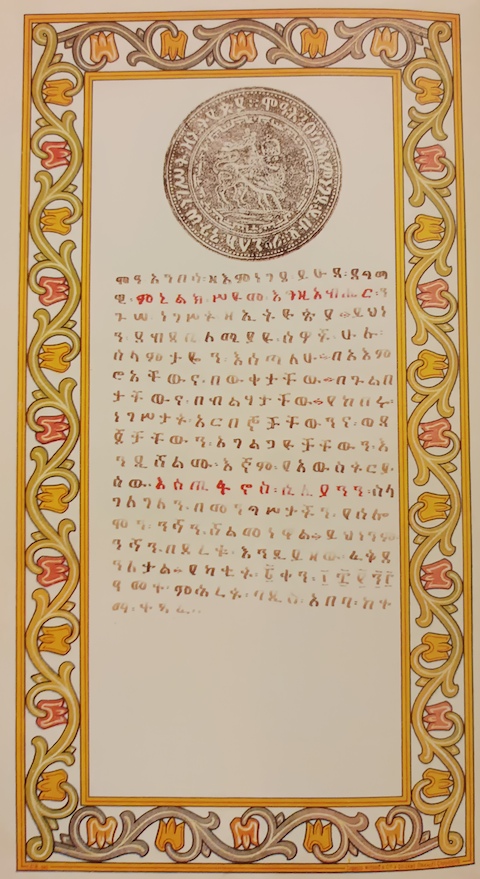
Recognition in honor of Mirko
Seljan by Ethiopian emperor Menelik II (1844-1913),
consisting of the "Medal of Ethiopian Star, bestowed for his service to
the country and the Government",
written in Amharic language and script, in the town of Addis Ababa in
20th Yekatit (February) 1893.
Source [Juraj Bubalo, p. 136]
Their most important book is Mirko and Stevo Seljan, El Salto del Guayra, 1905, Buenos Aires. Origianlly written in Croatian, so that it could be printed in the United Kingdom of Croatia, Slavonia, and Dalmatia, it was translated already in 1905 into French. In 1913 Stevo Seljan was elected as a honorary member of the Mexican Geographical Socitey.
In
1898, at the age of
27, Mirko Seljan walked 2800 km
from St. Petersburg (Russia) to Paris (France), in just 110 days. In
this way, he earned the title Champion Globetrotter. However, the
greatest Croatian globetrotter (and probably of entire history) was Josip (Joe, Joseph) Mikulec.
Photos (except the last one) are from Aleksandra Sanja Lazarevic: Zivot i djelo brace Seljan, Etnografski muzej u Zagrebu, 1977.
- Los hermanos Seljan, exploradores en África y Sudamérica, Lelio Janin, Buenos Aires
- Misionar na Gornjem Nilu, Damir Zoric
- Juraj Bubalo (ed.): Putovanja braće Seljan, biblioteka
Geographia Croatica, Zagreb 2021.
Henry Suzzallo (originally Zucalo, 1875-1933) was president of the University of Washington from 1915 to 1926. The central library of the University of Washington is called Suzzallo Library. His parents Petar and Ana Suzzallo, Croatians originating from Dalmatia, arrived to San Francisco in 1852.
On the birth certificate of Henry Suzzalo the names of his parents are given as Petar and Anna Zucalo. His godparents were also Croatians: John Lepes and Elisabeth Mahoni. Source: [Soric, p 105].
One of the most outstanding representatives of photochemistry was Ivan Plotnikov (1878-1955), a Russian emigrant to Croatia (1918) and a professor of physical chemistry in Zagreb.
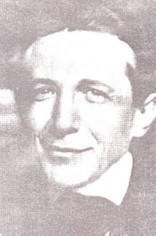 Milan
Sufflay (1879-1931), was a
brilliant Croatian historian and polyglot of international reputation,
known by his numerous scientific contributions, especially in the field
of albanology. His mother was a German from Hungary, and his father a
Croat. In 1913 and in 1918, in cooperation with Konstantin Jirecek and
Ludwig von Thalloczy, he published two volumes of Acta
Albaniae (Acta
et Diplomata res Albania mediaevalis illustrantia)
in Vienna, in the Latin language. It covers the history of Albania from
344 AD to 1406. His monograph Srbi
i albanci (Serbs and
Albanians), 1925, has been translated into French and English (English
translation from Croatian original by Theresa Alt and Wayles Browne,
Cornell University, USA). From 1908 till 1918 Sufflay was professor of
the University of Zagreb. From 1918 onward he was not allowed to
lecture any more, and the ex-Yugoslav government in Belgrade did not
allow him to visit Hungary, Italy, and the Vatican for scientific
archival work. It was forbidden for him to accept the position of
professor offered to him by the University of Budapest in Hungary.
Despite all this, Sufflay planned to publish a continuation of Acta
Albaniae in four additional
volumes. The project had been financed by the Albanian King Zogu and
the government of the state, and Sufflaz even delivered a lecture in
the building of the Albanian Parliament in Tirana in Albanian language
about his project. The financial support equivalent to today's
3,000,000 USD had been deposited in a Swiss bank.
Milan
Sufflay (1879-1931), was a
brilliant Croatian historian and polyglot of international reputation,
known by his numerous scientific contributions, especially in the field
of albanology. His mother was a German from Hungary, and his father a
Croat. In 1913 and in 1918, in cooperation with Konstantin Jirecek and
Ludwig von Thalloczy, he published two volumes of Acta
Albaniae (Acta
et Diplomata res Albania mediaevalis illustrantia)
in Vienna, in the Latin language. It covers the history of Albania from
344 AD to 1406. His monograph Srbi
i albanci (Serbs and
Albanians), 1925, has been translated into French and English (English
translation from Croatian original by Theresa Alt and Wayles Browne,
Cornell University, USA). From 1908 till 1918 Sufflay was professor of
the University of Zagreb. From 1918 onward he was not allowed to
lecture any more, and the ex-Yugoslav government in Belgrade did not
allow him to visit Hungary, Italy, and the Vatican for scientific
archival work. It was forbidden for him to accept the position of
professor offered to him by the University of Budapest in Hungary.
Despite all this, Sufflay planned to publish a continuation of Acta
Albaniae in four additional
volumes. The project had been financed by the Albanian King Zogu and
the government of the state, and Sufflaz even delivered a lecture in
the building of the Albanian Parliament in Tirana in Albanian language
about his project. The financial support equivalent to today's
3,000,000 USD had been deposited in a Swiss bank.
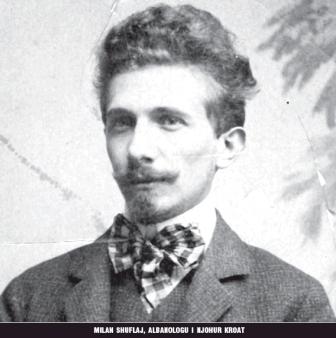
Sufflay was assassinated by a steel rod on a street in the center of Zagreb in 1931, at the age of 52. After the dramatic events that followed, Albert Einstein and Heinrich Mann sent an appeal to the International League of Human Rights in Paris to protect Croats from the terror and persecutions of the Serbian police. It was also published in the New York Times (6th May 1931). As we learn from this letter, the newspapers in Zagreb were not allowed to report about Sufflay's activity; it was not allowed to attach a half-mast flag on the main building of the University of Zagreb in his honour; the time of the funeral could not be announced publicly, and even condolence messages were not allowed to be telegraphed. In their letter Einstein and Mann hold the Yugoslav king Aleksandar explicitly responsible for the state terror over the Croats. The letter concludes that it should not be tolerated that killings be allowed as a means to achieve political goals. We should not allow killers to be promoted as national heroes. He is the author of the first Croatian SF (science fiction) novel Na Pacifiku 2255. In 2002, an international congress "Shuflaj dhe Shqiptarët", dedicated to Milan Sufflay, the pioneer of albanology, has been organized in Tirana, capital of Albania. Alfred Moisiu, president of Albania, posthumously decorated Milan Sufflay with the order of "Naim Frasheri d'or". Sufflay's written opus comprises about 3000 items.
- Albert Einstein and Heinrich Mann: Appeal on the occasion of killing of Professor Milan Sufflay in Zagreb
- New York Times (May 6, 1931): Einstein Accuses Yugoslavian Rulers in Savant's Murder,
- A Letter of Protest sent by American intellectuals organized by Roger N. Baldwin, Chairman of the International Committee for Political Prisoners, to the Yugoslav representative in Washington on November 24, 1933.
- NË DUBROVNIK, TË DHËNA TË REJA PËR MILAN SHUFLAJ, in Albanian
Peruvian Croat Juan (Jean) Bielovucic (1889-1949) was one of the first aviators in history. In 1913 he traversed for the first time the Alps by monoplane (20km in 26 minutes), reaching the height of 3200 m. In 1911 he performed the first flight in his native Peru, in the presence of the president of the state. He was one of the founders of Peruvian aviation. Bielovucic was also director of the Aviation School of Reims. See the monograph by Jose Zlatar - Stambuk: Bielovucic - pionero da la aeronautica Castrense, Lima 1990.
Le raid Paris - Bordeaux de Jean Bielovucic
Kristian Krekovic - the famous Croatian born Peruvian painter, pintor croata - peruano
Ivan Jagsic (1886-1956), born as a Burgenland Croat in Austria, studied cartography, topography and geology in Zürich. As a professor of University of Cordoba, Argentina, he lectured also meteorology and astronomy, and wrote numerous scientific books. The South American Oceanographic Institute in Brazil was named after him.
Lucas Kraglievich (1886-1932) was distinguished Argentinean paleontologist of Croatian descent.
Rudolf Fizir (1891-1960), born in Ludbreg in Croatia, built 18 airplanes. He was awarded the Paul Tissandier Diploma by the F.A.I. (Fédération Aeronautique Internationale), for his achievements in developing world aviation. With his two-wing aircraft Fizir, constructed in 1925, he won the first prize at the Petite Entente contest in 1927. From then on began his serial aircraft production in cooperation with well known companies: the Fizir-Mercedes, the Fizir-Wirght, the Fizir-Titan, the Fizir-Kastor, the Fizir-Gypsi, and the half-metallic Fizir-Jupiter.
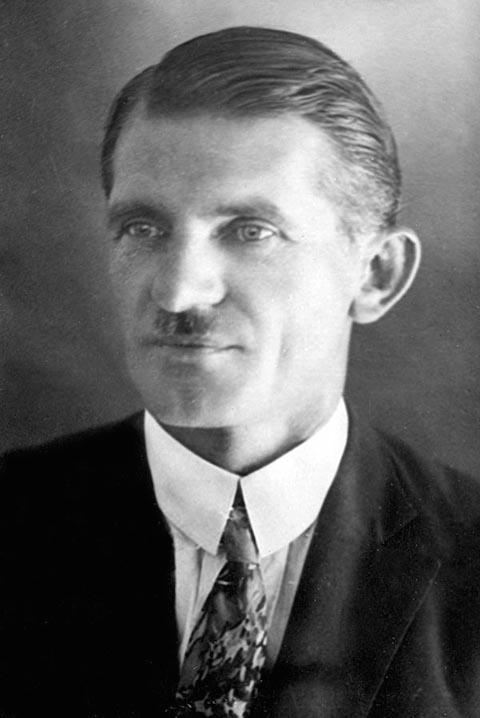
Rudolf Fizir and his Amphibian aircraft, Fizir 1931

Fizir's amphibia, 1931
He also reconstructed
some models into hydroplanes. His great success was Fizir
FN, two-wing, two-seat aircraft
with double commands (more than hundred planes!). It was used as
instruction plane even 30 years after the end of the WW2! In 1931 he
constructed amphibious aircraft, Fizir
1931 (see above), intended for landing on
rivers, lakes and the sea. He also constructed a tourist aircraft as
early as 1935. He also constructed parachutes, like its inventor Faust Vrancic.
During the WW2 he worked in Zagreb, lecturing aircraft construction at
the Technical Faculty.
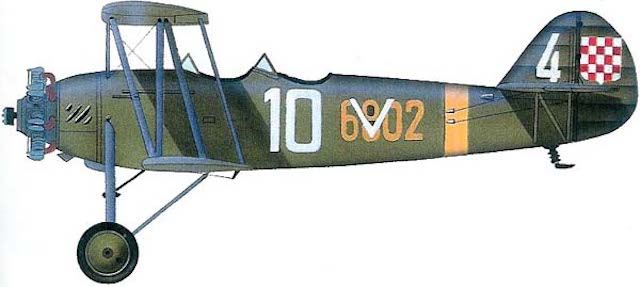
Fizir FP.2
After the WW2 he worked in the Industrial Research Institute in Zagreb. For more information see CROATIA, in flight magazine, Autumn 2000, pp. 89-99.
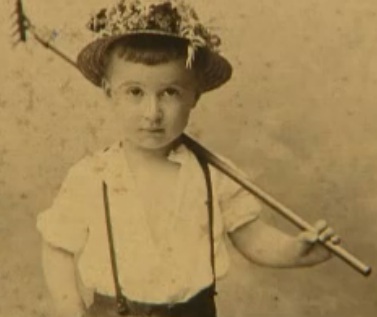
Marcel pl. Kiepach (1894-1915) was probably the youngest inventor that Croatia ever had. He patented his first inventions in several European countries already at the age of 16, mostly in the field of electrical engineering. His inventions have been patented in France, Germany, England, Switzeralnd and in the USA.
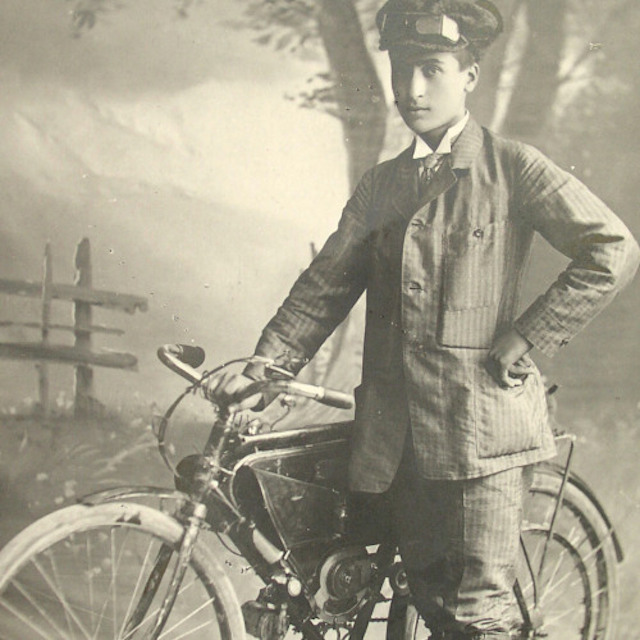
Photo from www.krizevci.eu
His first invention (maritime gyrocompass, which shows the
North irresepctive of surrounding metal objects or the influence of
magnetic forces) was patented in 1916 in Berlin (Kaiseriches Patentamt)
under No 246656, owner Marcel von Kiepach in Križevci, Kroatien.
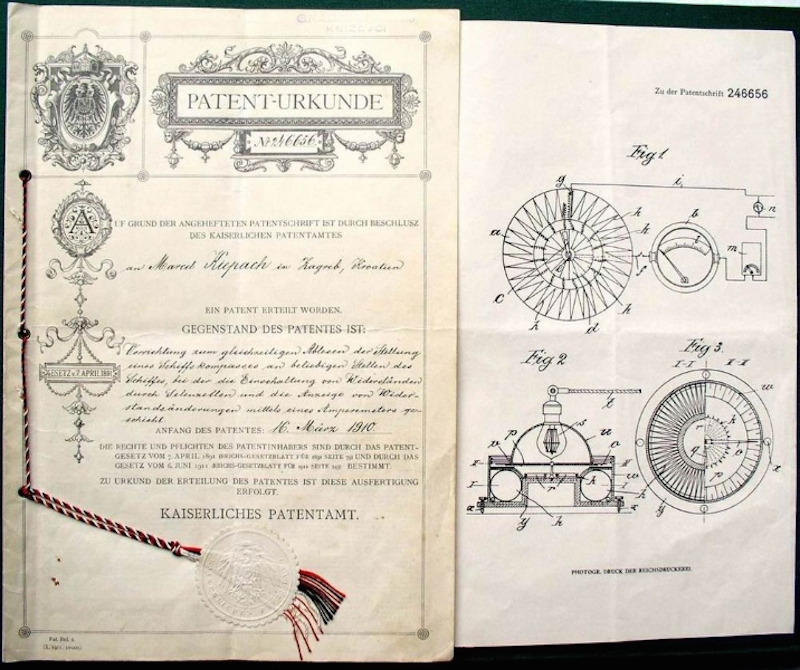
Source genius-croatia.com
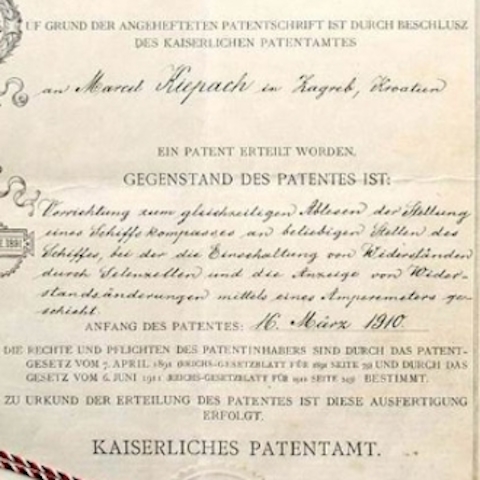
The same invention was patented in London already in 1911,
under No 28696, owner Marcel de Kiepach, Theaterplatz (Kazališni trg)
broj 8, Zagreb, Croatia, Austria, Landowner. In 1912, he patented his
dynamo machine for vehicle lighting in Paris. Even today we can see his
invention being used on bicycles.
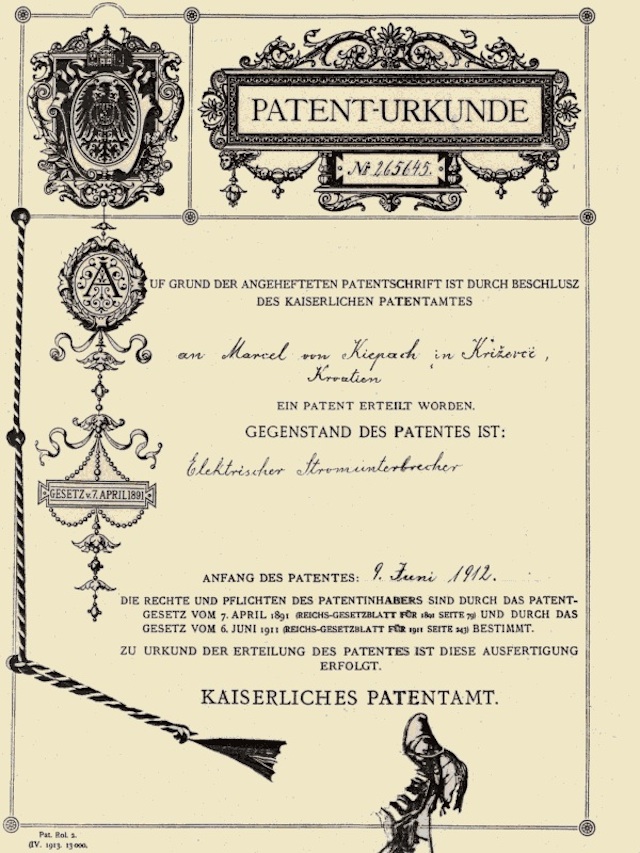
Photo from www.krizevci.eu

Marcel died very young at the age of 21 as a volonteer in
Poland in 1915 during the First World War. An extensive
documentation about him and his patents can be seen in the City Museum
of his native town of Krizevci. Today, the town of Križevci has the
street named after him and the Marcel Kiepach Innovation Society.
en.wikipedia.org/wiki/Marcel_Kiepach
hr.wikipedia.org/wiki/Marcel_Kiepach
prigorski.hr/marcel-kiepach-krizevci-12-veljace-1894-ruska-poljana-13-kolovoza-1915/
Zoran Homen: ZABORAVLJENI IZUMITELJ NA POLJU ELEKTROTEHNIKE [PDF]
Stefan Gelineo, Croat by birth, born in Stari Grad on the island of Hvar (1898-1971), studied in Leipzig and Vienna. He was the professor of physiology at the University of Belgrade (capital of Serbia and former Yugoslavia). He is internationally known by his contributions to the study of hypothermia, i.e. the study of vital functions under low temperatures.
Stjepan Mlakic (1844-?) Bosnian Croat born in Fojnica, a missionary in Africa among the tribes of Shiluks and Nuers in Sudan, like his colleague Kohnen. Very educated, besides his native Croatian he spoke German, Italian, English and Arabian, to which he added the language of Nilot tribe of Nuers. His letters to his brother (also a priest) in Bosnia witness about his very close contacts with Africans. It is worth to note his discovery that in Egypt, near the town of Korsko, there is the village of Ibrim, where used to live Bosnian Muslims (!) inhabited there by a Turkish sultan. He donated a rich collection of artifacts of African culture to the Zagreb Ethnographic museum. See [Zoric].
Bernardo Kohnen (1876-1937), German by birth, born near Hannover, moved as a young boy with his parents to Bosnia, where he attended the famous Jesuit gymnasium in Travnik. He devoted about 30 years of his life to the evangelization and study of life of Shiluks (southern Sudan), at that time one of the most isolated tribes in Africa, and other Nilot tribes (Denka, Nuer, etc). "Father Shiluk", as he was called by the Shiluks themselves, wrote first dictionaries, grammars, and translated holly and liturgical books into their language, praised by the english scholars. Although born as German, Kohnen spoke and wrote in Croatian. He donated some of the artifacts of African culture to the Zagreb Ethnographic museum. See [Zoric].
Fran Bosnjakovic (or Franjo Bosnjakovic, 1902-1993), born in Zagreb, was one of world's leading experts in technical thermodynamics. Educated in Zagreb, where his scientific career started in 1926, he moved to Dresden, Germany, in 1928. In 1931 he became university teacher at Dresden High Mechanical Engineering School. After a short stay in Belgrade, he moved back to the University of Zagreb in 1936. He was a collaborator of Croatian Encyclopaedia. After 1945, during the Yugoslav communist regime, he was degraded to two years of forced labor. In 1951 he became rector of the University of Zagreb.
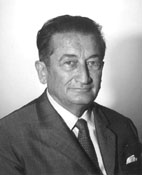 Since
1953 he started lecturing at the High technical school in
Braunschweig in Germany, where he became head of the Department
for thermodynamics and director of the Thermotechnical institute.
In 1961
he founded the Institute
of
Thermodynamics for Aeronautics
and Astronautics
at the
University of Stuttgart, Germany, that he led
until his retirement in 1968. He also established groups for
Irreversible Thermodynamics,
Mass Transfer and Thermokinetics,
Radiation and Plasma,
and Heat Transfer.
It is interesting that his textbook Technische
Thermodynamik,
published already in 1935 in Dresden, had seven improved and
extended
editions in Germany, and was
translated into English (Technical Thermodynamics) and Russian
(Tehnicheskaya termodinamika). The Croatian translation had
five editions (Nauka o toplini).
See his list of publications
held at the
University of Stuttgart.
Since
1953 he started lecturing at the High technical school in
Braunschweig in Germany, where he became head of the Department
for thermodynamics and director of the Thermotechnical institute.
In 1961
he founded the Institute
of
Thermodynamics for Aeronautics
and Astronautics
at the
University of Stuttgart, Germany, that he led
until his retirement in 1968. He also established groups for
Irreversible Thermodynamics,
Mass Transfer and Thermokinetics,
Radiation and Plasma,
and Heat Transfer.
It is interesting that his textbook Technische
Thermodynamik,
published already in 1935 in Dresden, had seven improved and
extended
editions in Germany, and was
translated into English (Technical Thermodynamics) and Russian
(Tehnicheskaya termodinamika). The Croatian translation had
five editions (Nauka o toplini).
See his list of publications
held at the
University of Stuttgart.
Professor Bosnjakovic obtained honorary doctorate from High Technical School RWTH Aachen, Grashof's medal from the German Society of Engineers VDI in 1969, gold medal from the Associazione Termotechnica Italiana in Padova in 1966, another gold medal from the Institut français des combustibles et de l'énergie in Paris. On the occasion of his 80'th birthday in 1982 the German Society of Engineers VDI issued a special publication devoted to his scientific work. In 1987, on the occasion of his 85'th birthday, a solemn colloquium was organized by the Technical University of Stuttgart. Also, he was a member of
- Academies in Heidelberg (Heidelberger Akademie der Wissesnschaften),
- Braunschweig (Braunschweigsche Wissenschaftliche Gesellschaft),
- Assoziazione Termotecnica Italiana in Padova, 1966 (recipient of gold medal),
- Istituto Veneto di Scienze, Lettere ed Arti in Venice,
- honorable member of Institut International du Froid (International Institute of Refrigeration) since 1960,
- Institut francais des combustibles et de l'energie, 1970 (recipient of the medal),
- Croatian Academy of Sciences and Arts (1992, i.e., only after the fall of ex Yugoslavia, and a year before the death of Bosnjakovic).
Denn das Ingenierwessen is vor allem auch ein Beruf des Könnes und der verantwortungsvollen Gestaltung, wofür wissenschaftliche Grundlagen nur einen, wenn auch beachtlichen, notwendigen Teil bilden.
ECOS 2002 International conference, organized by the Institute for Energy Engineering at the Technical University of Berlin, has been dedicated to the memory of Fran Bosnjakovic.
Bosnjakovic's "Technische Thermodynamik" had till the year 2000 altogether thirty editions in four languages (German, English, Russian, and Croatian).
- In 1945 the book was translated as "Technical Thermodynamics I" by Edwards Brothers Inc, Ann Arbor, Michigan, USA (unauthorized translation), and the same year "Technical Thermodynamics II" (by the same publisher, also unauthorized translation).
- The first Croatian edition appeared in 1947 in Zagreb.
- The first Russian edition "Tehicheskaya termodinamika, chast' pervaya" of volume I of Bosnjakovic's monograph appeared unauthorized in 1955, published by the State Energetic Publishing House (Gosudarstvennoe energeticheskoe izdatel'stvo), Moscow and Leningrad. The second volume of the Russian edition was issued in 1956, also unauthorized. In their Preface to the book the translators stress the excellency of exposition, and in depth theoretical analysis. A sample of Russian edition sent to professor Bosnjakovic contains the following dedication: Glubokouvazhaemomu profesoru Bosnjakovicu ot perevodchika etoj prekrasnoj knigi, na pamyat', V.A. Kirillin [one of translators], 1969, Moskva.
- The authorized editions of Bosnjakovic's books in the USA were published in 1965 by Holt, Reinhart and Winston, New York (20 year after unauthorized edition).
Danilo Blanusa (1903-1987), Croatian mathematician, professor at the University of Zagreb, was born in Osijek. He discovered a mistake in relations for absolute heat Q and temperature T in relativistic phenomenological thermodynamics, published by Max Planck in Annalen der Physik in 1908:
His work in graph theory resulted with what is now known as
- Blanusa's Snark
- Blanusa's Snark at Wolfram Research
- Tomislav Petkovic: D. Blanusa’s formulae for heat and temperature transformations in relativistic thermodynamics and his correspondence with W. Pauli in 1948, [PPT]
- photos
Max Planck's public lecture in Croatia's capital Zagreb in 1942
It is not widely known that Max Planck visited the Croatian capital Zagreb in the autumn 1942, when he was at the age of 84. He delivered a lecture at the University of Zagreb on September 15th, entitled "On the goals and boundaries of exact natural sciences" (sources: Priroda, Zagreb 1942, p 184, or Glasnik Mat. Fiz. Astr. 2, 1947, p 213). Max Planck spent a few days in Zagreb lodged at Hotel Esplanade (no traces of his stay in this hotel have been left after 1945). He visited the family of academician Stjepan Ivsic (at that time the Rector of the University of Zagreb), distinguished Croatian linguist and polyglot. (Many thanks to Mrs. Ljiljana Ivsic, granddaughter of Stjepan Ivisic, for this information, 2015 ; also according to her information, the family of Ivsic is in possession of a personal letter of Max Planck addressed to Stjepan Ivsic.)
The most important reference about Planck's visit to Zagreb is here (about 40 pp), and about the content of his lecture (including the danger of creating the atomic bomb):- Boris Kožnjak: O predavanju Maxa Plancka »Smisao i granice egzaktne znanosti« u Zagrebu 15. rujna 1942. [PDF], Prilozi za istraživanje hrvatske filozofske baštine 45/1(89) (2019) 183–223
Planck's lecture was delivered in German. See also:
- Leo Randić, »Pola stoljeća boravka nobelovca Maxa Plancka u Zagrebu« [PDF], Priroda 82/3–4–5 (studeni–prosinac 1992, siječanj 1993), pp. 8–9.
William Feller (Vilim, Willy, Willi, 1906-1970) is a well known name among mathematicians dealing with probability theory. He was born and educated in Zagreb as Vilim Feller, where he studied mathematics for two years (completing 4 semesters out of 8), and then in 1926 continued his studies at the University of Göttingen. By the end of the same year, at the age of 20, he defended his doctoral degree in mathematics. Göttingen at that time the strongest mathematical center in the world besides Paris. He was a professor at the Universities of Kiel, Copenhagen, Stockholm, Lund, Providence, Princeton etc., a member of many scientific organizations. More than 150 mathematical notions bear his name, and here are just a few of them: Feller's process, Feller's transition function, Feller's semigroup, Feller's property. He is best known for his monograph "An Introduction to Probability Theory and its Applications", Volumes I and II, on 1153 pp., translated into Russian, Chinese, Castilian, Japanese, Hungarian and Polish. They are considered among the best mathematical textbooks written in the 20th century. At the International Congress of Mathematicians held in 1958 in Edinburgh, William Feller gave a plenary talk "Some new connections between probability and classical analysis."
For more information see William Feller (photo by Paul Halmos).
Feller was among those who initiated issuing the important Mathematical Reviews journal, and was its first executive editor (1944-1945). He worked with von Neumann, one of the creators of modern computers. Feller was awarded the National Medal of Science of the USA in 1969. He was in touch with his relatives in Zagreb, as well as with his colleagues at the University of Zagreb.
Joseph Doob, a renowned American mathematician, wrote about Feller the following:
Those who knew him personally remember Feller best for his gusto, the pleasure with which he met life, and the excitement with which he drew on his endless fund of anecdotes about life and its absurdities, particularly the absurdities involving mathematics and mathematicians. To listen to his lecture was a unique experience, for no one else could lecture with such intense excitement. No one could generated in himself as well as in his auditors so much intense excitement. In losing him, the world of mathematics has lost one of its strongest personalities as well as one of its strongest researchers.
Vilim Feller, extensive biography, with emphasis on his life in Zagreb, Croatia

Ferdinand Feller, the eldest brother of Vilim (William) Feller (1906-1970), is the author of the graphic sign of the Croatian optical industry Ghetaldus, named after Marinus Ghetaldus, that is, after Marin Getaldić. Photo by D.Ž. in the city of Rijeka. See also Elsa fluid.
The Savannah nuclear ship, the first nuclear-powered merchant ship, was built to the plans of Erazmo Tićac. Born in Žurkovo in 1904, Erazmo went to schools in Žurkovo, Kostrena and Bakar, and made a career as a shipbuilding engineer in the USA. After the president Dwight Eisenhower announced his decision to build an experimental nuclear-powered merchant ship in 1955.
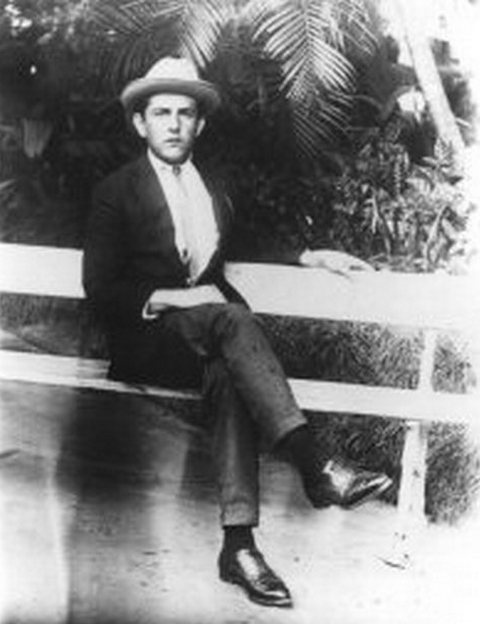
Erazmo Tićac, planner of the Savannah nuclear ship. Source of the photo.
The planning was entrusted to the firm The Sharp Brothers Inc., and Tićac became the leading planner. The ship was launched in 1959. On a plaque above the entrance to the ship’s lounge was written in golden letters: "Ben Tićac, naval architect". Erazmo got the name Ben when he received American citizenship. Source of the text www.kvarner.hr
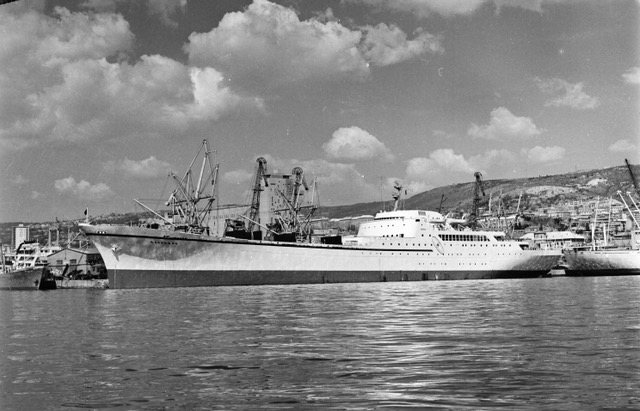
Savannah during one of its visits to the city of Rijeka, Croatia.
Photo by the courtesy of Miljenko Smokvina, Rijeka.
For more information see www.croatia.org.
George M. Skurla (1921-2001), after completing his college training, he joined the Aircraft Engineering Corporation as an apprentice engineer. In 1965, he became director of operations for Grumman at the National Aeronautics and Space Administration's (NASA) Kennedy Space Center (KSC). In that position, he brought together the 1,600-man Grumman team responsible for the final assembly, test and pre-launch checkout for the Apollo lunar module vehicle. Skurla led the team that built the historic Apollo 11 lunar landing module. The lunar modul spacecraft, which was designed, developed and produced by Grumman co., was the final stage in NASA's Apollo Program which landed American astronauts on the surface of the moon.
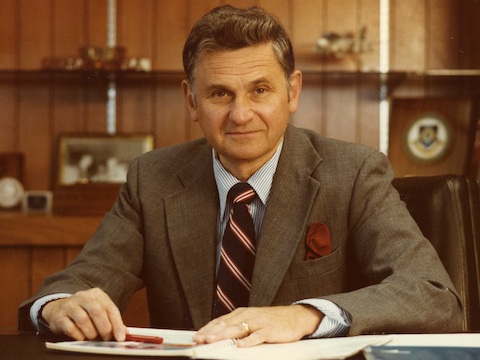
In 1973, Skurla became general manager of Calverton operations and revitalized production of the F-14 Tomcat. Elected president of Grumman Aerospace Corporation in 1974, he held this post until becoming president of the parent organization, the Grumman Corporation, in 1985. George Skurla was a Croatian-American whose parents were from Herzegovina.
Skurla was enshrined in the Michigan Aviation Hall of Fame on April 19, 2008. In his honor, the "George M. Skurla Outstanding Alumni Award" has been established by the Florida Institute of Technology. The same institute has the "George M. Skurla Building" (or George M. Skurla Hall) as a part of its campus.
Sources: www.airzoo.org, www.angelfire.com
SKURLA, GEORGE Appolo Space Program George Skurla, 80, a retired Grumman Corporation president known for his leadership during the heady days when the company's lunar module landed on the moon, died September 2, 2001 at a hospital in Melbourne, Florida. He had pneumonia. 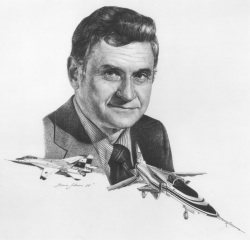 Grumman's lunar modules shuttled Neil Armstrong and Buzz Aldrin from Apollo 11 toward the "giant leap for mankind" in 1969 and, a year later, returned the crew of Apollo 13 to Earth when their main spacecraft became disabled. As director of operations at Kennedy Space Center in Florida in the late 60’s, Mr. Skurla managed 1,600 employees responsible for assembling and testing the lunar modules from parts made at Grumman headquarters in Bethpage, N.Y. He began his 42-year career at Grumman in 1944 as an apprentice engineer and was named company president in 1985. Grumman has since become part of Los Angeles-based Northrop-Grumman. George Skurla was a Croatian-American whose parents were from Herzegovina. As head of Grumman, he was one of the key men behind the Appolo program. Source Adam Eterovich Bracanin |
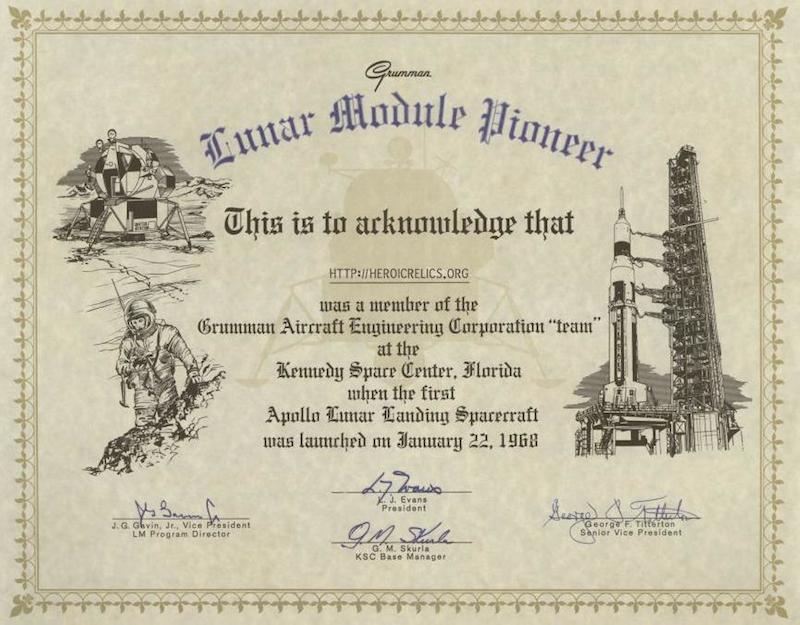
A letter of acknowledgemnt from the Kennedy Space Center (KSC), with the signature of G. M. Skurla at the bottom.
Source heroicrelics.org
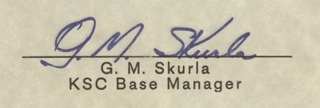
KSC (i.e., Kennedy Space Center, Florida) Base Manager

Source www.stargate-chronicles.com
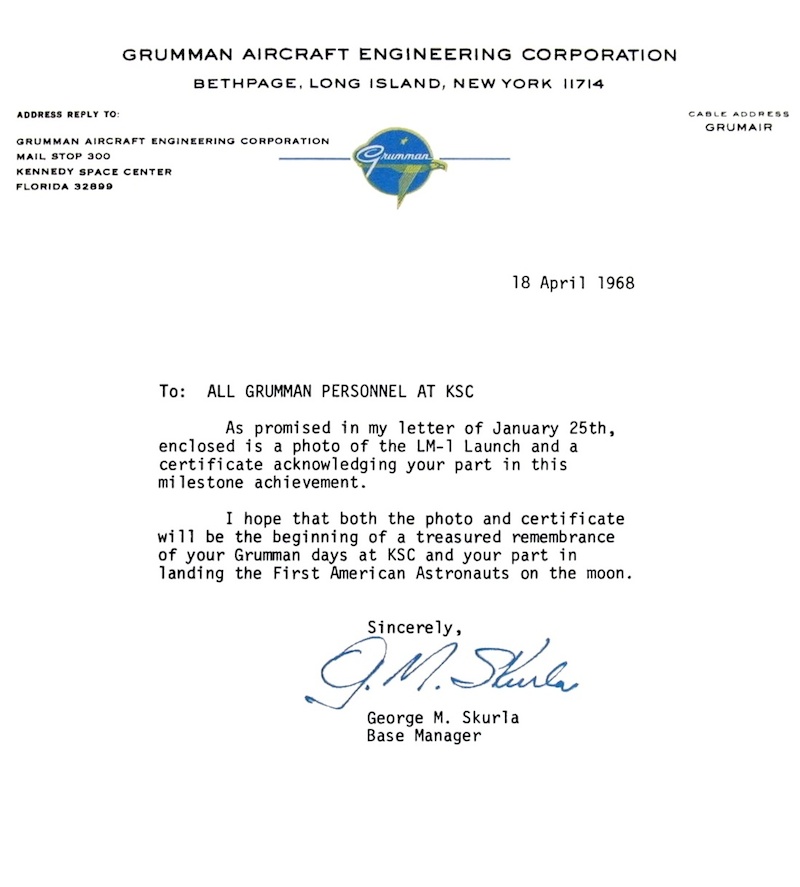
Certificate signed by George M. Skurla, the KSC (Kennedy Space
Center) Base Manager.
Source heroicrelics.org
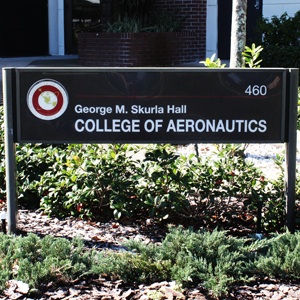
George M. Skurla Hall at the Florida Institute of Technology
Skurla Hall is the home of the School of Aeronautics at Florida Tech.
It contains many classrooms, computer labs, faculty offices, and a large auditorium.
Florida Institute of Technology Skurla Hall
Milojko Mike Vucelic, former Apollo System Manager for NASA/Rockwell, recipient of Presidential Award for Freedom, studied Mechanical Engineering at the Univeristy of Zagreb, and was a member of Croatian Nobility in the city of Zagreb.
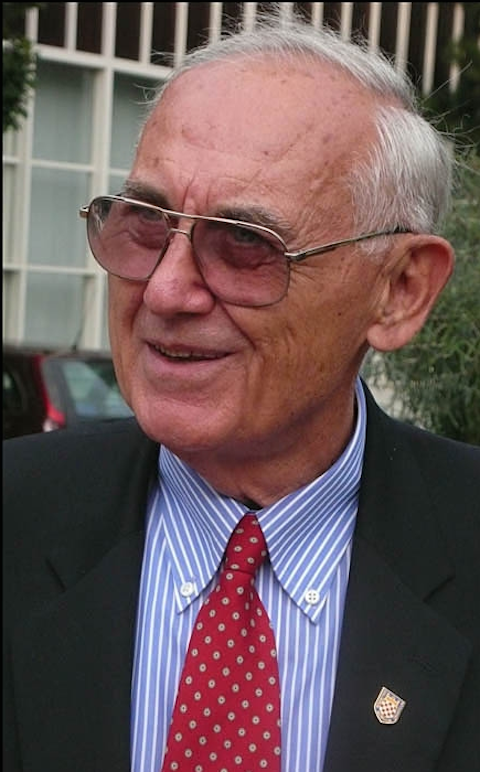
Mike Vucelic, with a badge of Croatian nobility in the form
of Croatian Coat of Arms, to the right of his cravat. Photo by Anto Magzan/Pixell.
Jacob Jake Matijevic (1947-2012), of Croatian origin, PhD in Mathematics from the University of Chicago, was NASA engineer and a father of Curiosty rover which successfully landed on the planet Mars in 2012. NASA named several landmarks, including "Matijevic Hill" and "Jake Matijevic" rock, for him on the planet Mars.
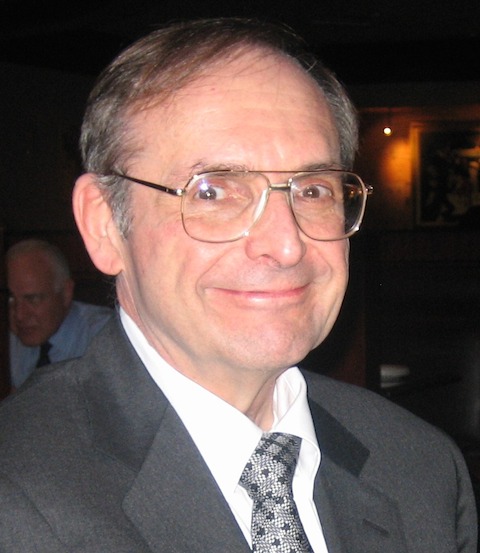
Dr. Jacob Jake Matijevic died a few weeks after his rover landed on Mars.
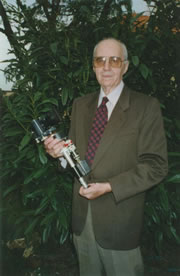
In 1972 Hrvoje Saric invented and patented the first professional synchro-rotational photo-camera (360-degree camera) in history. In 1988 he deviced the first electronical construction consisting of nine BETACAM videocameras, catching the range of the full circle. Saric's 360 degree film technology was exploited at 1988 and 2000 at EXPO exhibitions organized in Lisbon, Portugal, and in Hannover, Germany.
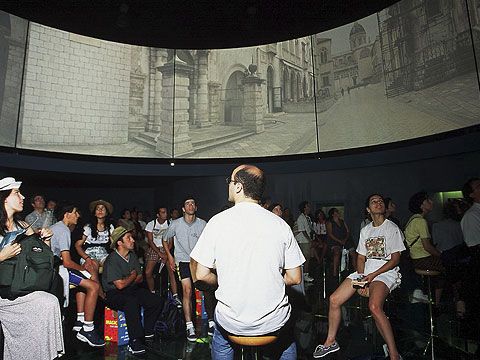
Croatian pavillion was the main event at the 1998 EXPO in Lisbon, Portugal, among others due to 360-degree film technology introduced by Hrvoje Saric.
Vladimir Jurko Glaser (1924-1984), theoretical physicist in the field of quantum fields theory, published one of the first monographs on Quantum Electrodynamics in the world (Kovarijantna kvantna elektrodinamika, Zagreb 1955, written in Croatian), at the age of 31. On p. 8 of the book he mentioned that the existence of positronium has been theoretically predicted by Stjepan Mohorovicic in 1934.
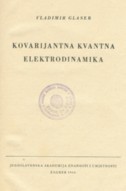 |
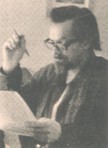 |
He was head of the Department of Theoretical Physics at the Rudjer Boskovic Institute in Zagreb. In 1957 he found permanent employment at the Department of Theoretical Physics in CERN in Geneva. Letters sent to Glaser by Wolfgang Pauli (nicknamed "the sword of theoretical physics") show Glaser's outstanding scientific status among theoretical physicists of his time. On the occasion of Glaser's death, during the commemoration held in CERN, prof. Henry Epstein said that he does not understand Croatian, but when in need for details and formulae, he prefers to consult Glaser's book (written in Croatian!), since it is reliable in all details. For more information see here (in Croatian).
One of our best theoretical physicists was Gaja Alaga (1924-1988), member of the Croatian Nobility from Backa and Bunjevci Croat.
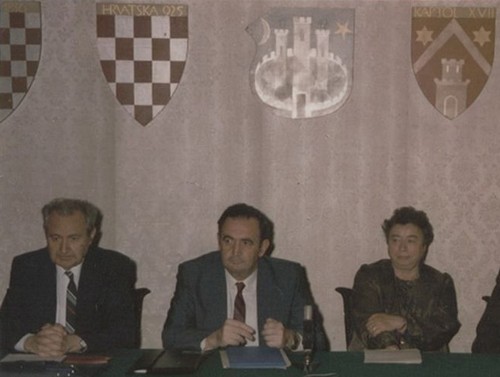
Professor Gaja Alaga on the left, a member of Croatian Nobility. Source www.knjiznica.phy.hr
He worked not only in Zagreb, but also at the Niels Bohr Institute in Copenhagen, Berkeley, Ludwig-Maximilians University in Munich etc. In 1955, in cooperation with K. Alder from Switzerland, A. Bohr from Denmark and B. Mottelson from the USA, he discovered the so called K-selection rules and intensity rules for beta and gamma transitions in deformed nuclei.
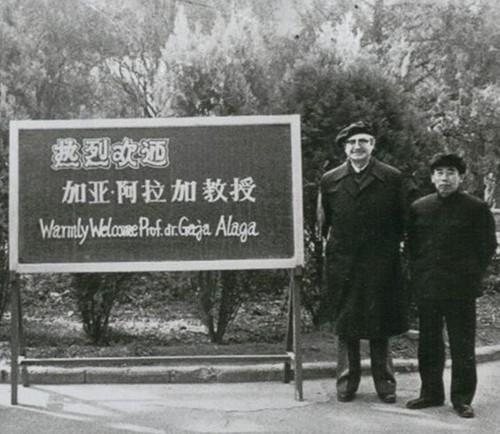
Warm reception of professor Gaja Alaga in China. Source www.knjiznica.phy.hr
Sibe Mardesic (1927-2016), distinguished Croatian
mathematician - international expert in the field of Topology,
especially in Shape Theory.
Alex Grossmann
(1930-2019), born in Croatia's capital Zagreb, he completed his study
of Physics at the University of Zagreb and earned his PhD at the Rudjer
Boskovic Institute. Since 1965 he was employed at the University of
Marseille in France. This Croatian-French mathematician is considered
as a father of Wavelet Theory, due to his groundbreaking joint work
with French geophysicist Jean Morlet in 1984. He was a thesis advisor
to distinguished Belgian physicist and mathematician Ingrid Daubechies
(she was the first women president of the International Mathmatical Union).
Nikola Cindro (1931-2001) was a Croatian physicist, descendant of very old Croatian Nobility from 8th century, from Croatian south (Split, Poljica). He was lecturing in Zagreb, Frankfurt, Paris and Strasbourg, and occupied the position of vice president of European Physical Society. His high quality work was recognized also abroad: he was a member of Italian physical society and Officier dans l'Ordre des Palmes Academiques, Paris, 1997.
Zvonimir Janko (born in 1932 in Croatia), studied mathematics and earned his PhD at the University of Zagreb. He is professor of mathematics at the University of Heidelberg, Germany, and his name is well known among experts in the theory of finite groups. Professor Janko discovered sporadic groups named J1, J2, J3, and J4 in his honour. They are called Janko groups.
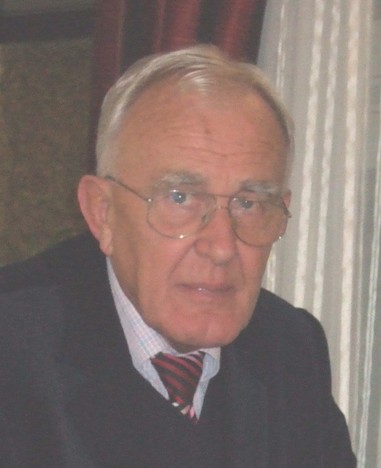
Zvonimir Janko in 2007, at the age of 75
(photo
by dr. Mario Pavcevic, Zagreb)
The discovery of J1 in 1964, more than a century after the discovery of the first sporadic group, launched the modern theory of sporadic groups. His group J4, discovered in 1976, has
86 775 571 046 077 562 880
elements. About his research he delivered an invited lecture at the International Congress of Mathematicians in Nice, France, 1970.
Lit.
- A.A. Ivanov (professor at Imperial College, London): The Fourth Janko Group (256 pp), Oxford Math. Monographs, 2005.
- Janko Groups at Wolfram MathWorld
- Janko Groups at Wikipedia
- [Janko Herak, pp. 101-108]
Eduard Prugovecki (1937-2003), outstanding Croatian theoretical physicist, was born in Craiova, Romania (his mother was Romanian of Polish descent, and his father was Croatian). Having completed his primary and secondary education in Bucharest, he moved with his family to Zagreb, where he studied physics and started his early scientific career. In 1961 he was sent to Princeton where he received his Ph.D. in 1964. The next year he emigrated to Canada, and since then worked at the University of Toronto. Professor Prugovecki wrote four monographs, and the last two are
- Quantum Geometry (Kluwer, 1992)
- Principles of Quantum General Relativity (World Scientific, 1995)
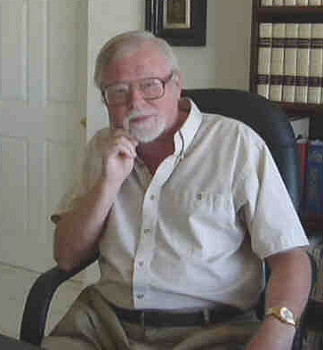
Milan
Randić, distinguished international expert in Mathematical Chemistry
and a founder of The International
Academy of Mathematical
Chemistry, is best known for his
connectivity index, now known as the Randić index. He studied
Theoretical Physics in Zagreb and founded
Theretical Chemistry group at the Rudjer Boskovic Insitute in Zagreb.
He is distinguished professor at the Department of Mathematics and
Computer Science at Drake University, Des Moines, Iowa, USA.
Ivan Hrvoić (1937) is Croatian scientist, inventor and entrepreneur, born and educated in Croatia, since 1972 living in Canada.
In 1980 he incorporated his own company GEM systems, Inc. in Toronto, developing and producing magnetometers for surveys of the Earth magnetic field for magnetic observatories, searching for minerals, diamonds, oil, studies of volcanoes, earthquaqes, archaeological research, meteorolgy, etc. Today GEM System is the World leader in its special field and Ivan Hrvoić is one of the leading experts for measurements of Earth magnetic field.
Dr. Ivan Hrvoić is also distinguished Croatian benefactor. In the period of 1990-1995 he directed AMCA Toronto, The Association of Alumni and Friends of Croatian Universities in Toronto (AMCA - Alma Matris Croaticae Alumni).
Ivan Gutman, born in the city of Sombor, is distinguished Croatian expert in Mathematical Chemistry, prolific author of more than 1200 scientific articles, a member of editorial boards of numerous professional journals, professor of Physical Chemistry at the University of Kragujevac. He has two PhD's: in Chemistry (from the University of Zagreb) and in Mathematics (from the University of Belgrade). Among his monographs we mention
- A. Groavac, I, Gutman, N. Trinajstic: Topological Approach to the Chemistry of Conjugated Moleculs,
- Xueliang Li, Ivan Gutman: Mathematical Aspects of Randić-type Molecular Structure Descriptors, Mathematical Chemistry Monographs, University of Kragujevac, 2006
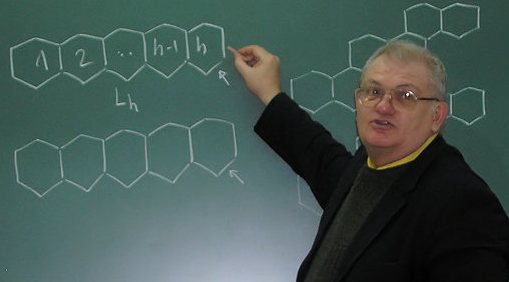
Ivan Gutman lacturing about hexagonal systems
at the Department of Mathematics of the University of
Osijek in 2007
He is a member of the Intenational Academy of Mathematical Chemistry, of the Academy of Nonlinear Sciences in Moscow and of Academia Europaea.
You can also see the names of three Croatian Nobel prize winners:
Lavoslav Ruzicka (1887-1976, born in Vukovar, of a Czech father and a Croat mother, attended the gymnasium of Osijek), obtained the Nobel Prize for discoveries in organic chemistry, professor at the Technische Hochschule in Zurich, Switzerland 1939; see Ruzicka links.
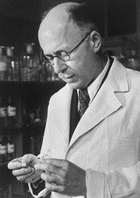
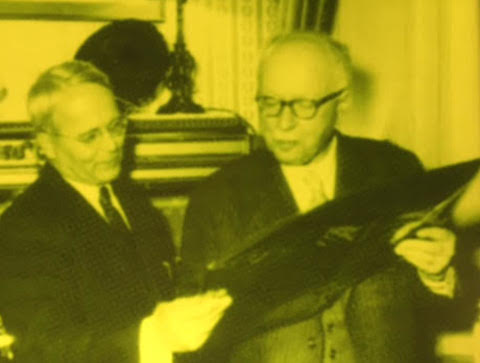
Lavoslav Ruzicka on the right, is a honorary member of the Polish
Academy of Sciences since 1960.
The photo is shown in the Memorial room dedicated to Lavoslav Ružička
and Vladimir Prelog,
at the Croatian Academy of Sciences and Arts.
Lit. [Janko Herak, pp. 35-43]
Vladimir Prelog, (1906-1998, a Croat born in Sarajevo in Bosnia and Herzegovina, studied in Zagreb), obtained the Nobel Prize for discoveries in organic chemistry, worked at the Technische Hochschule in Zurich, 1975. As a young boy he was a stipendist of Napredak, Croatian cultural society in Bosnia and Herzegovina. See Prelog links. He wrote his authobiography, Vladimir Prelog: My 132 Semesters of Studies of Chemistry, American Chemical Society, Washington DC 1991 (second edition by Oxford University Press, Oxford, 1998). Prelog was among 112 Nobel Prize winner who signed and appeal For Peace in Croatia in 1992. He himself expressed on numerous occasions his public protest against the aggression on Croatia and BiH during the 1990s.
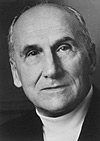
![]()
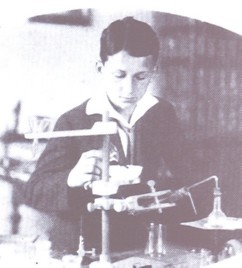
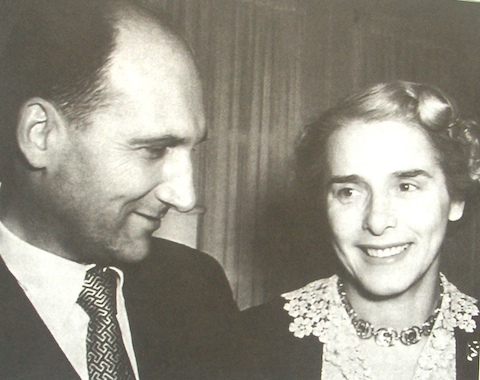
Vladimir Prelog with his wife Kamila, of the Czech origin. Photo from
Marijan Lipovac and Vlatka Banek: Hrvatsko-češko društvo / prvih 25 godina, Zagreb 2017, by the courtesy of Mr. Lipovac.
The third Croatian Nobel Prize winner is Ivo Andric, for literature. We mention here again that Nikola Tesla refused to receive the Nobel prize for physics, which he had to share with T.A. Edison.
PLIVA is today the largest pharmaceutical company in Croatia and by sales, the largest in Central and Eastern Europe. Its best selling product is Sumamed antibiotic.
Lit. [Janko Herak, pp. 9-34]
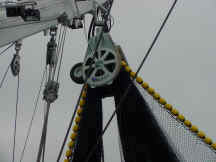 Mario
Puretic (1917-1993, born in Croatia
in the town of Sumartin on the island of Brac; his true name was Mario
Puratic),
revolutionarized the technology of pulling out fishing nets from the
sea by his construction of what is now known as the Puretic
Power Block in 1950s. Until
then fishing nets had to be manually drawn by eight to ten people,
which was an extremely difficult job. The Marco Seattle company
developed Puretic's idea, and it soon became a standard mean of fishing
in the whole world. In 1975 the United States Patent Office conferred
him a special recognition for his patent which revolutionarized the
fishing technology worldwide. He was elected among hundred greatest
inventors of the 20th century in the USA.
Mario
Puretic (1917-1993, born in Croatia
in the town of Sumartin on the island of Brac; his true name was Mario
Puratic),
revolutionarized the technology of pulling out fishing nets from the
sea by his construction of what is now known as the Puretic
Power Block in 1950s. Until
then fishing nets had to be manually drawn by eight to ten people,
which was an extremely difficult job. The Marco Seattle company
developed Puretic's idea, and it soon became a standard mean of fishing
in the whole world. In 1975 the United States Patent Office conferred
him a special recognition for his patent which revolutionarized the
fishing technology worldwide. He was elected among hundred greatest
inventors of the 20th century in the USA.
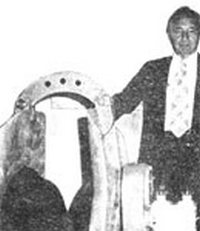
Mario Puratić with his power block,
among mariners often named simply as "Puretić"
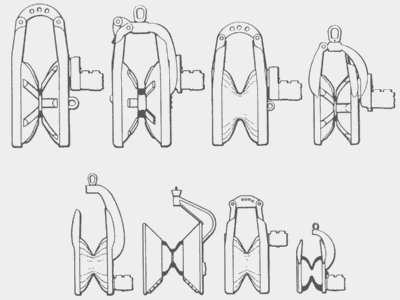
Variants
of the Puretic power block
source: FAO
(Food and Agriculture Organization, UN)
In 1972 the National Bank of Canada issued a new series of 5 dollar banknotes with the Puretic Power Block on a fishing boat drawn on the reverse side! See here:
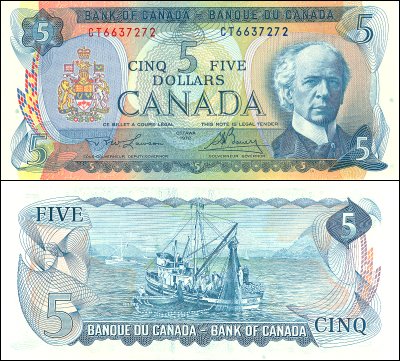
Source: Old Salts - The Falkusa and Croatian
Tourism,
at www.lifejacketadventures.com
When Mario Puretic died, his remains were brought from the USA to his native town of Sumartin in 1994. He was an honorary citizen of many countries, including Island (many thanks to Ms Nena Kazulin, USA, for this information).
For more details see
- Adam Eterovic: Mario Puretic, the King of Purse Seine Fishing
- Mario Puratic (in Croatian)
From Marco Seattle web site: No single invention has contributed more to the success of purse seine net hauling than Marco's extensive line of Power Blocks. First introduced in the 1950's the Puretic Power Block line became the linch-pin in the mechanization of purse seining. Combined with fluid hydraulic power technology and new large synthetic nets, it changed the whole character of purse seine fishing. From those early days the Marco Power Block has undergone many design improvements to provide the widest available range of sizes and power options to match changing requirements.
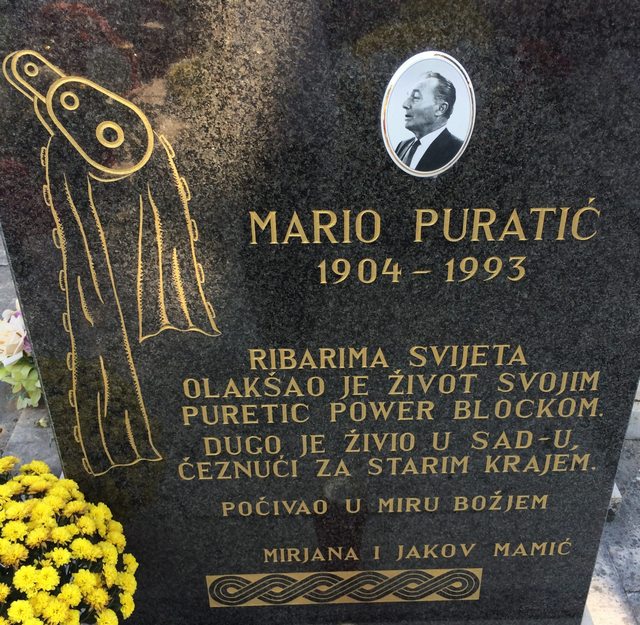
Inscription on the grave of Mario Puratić in his native town of
Sumartin (= St. Martin) on the island of Brač, Croatia.
This photo and the three photos below by Mr. Slavko Štambuk.
MARIO PURATIĆ
1904 - 1903
ALLEVIATED THE LIFE OF MARINERS
THROUGHOUT THE WORLD
BY HIS PURETIC POWER BLOCK.
HE LIVED FOR A LONG TIME IN THE USA,
HOMESICKED FOR HIS NATIVE LAND.
REST IN GOD'S PEACE
MIRJANA I JAKOV MAMIĆ
The birth house of Mario Puratić
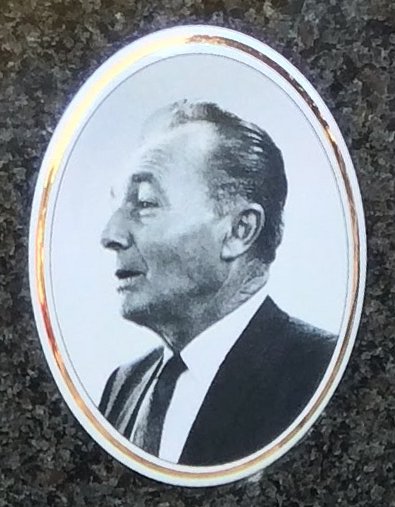
Mario Puratić, born on the island of Brač, Croatia, in the town of Sumartin
Ribarski uredaj PURETIC POWER BLOCK je namijenjen za izvlacenje i prikupljanje mreze na ribarskim brodovima.
Source: www.lifejacketadventures.com |
Hrvatska numizmatička kovanica "Puratićev kolotur", 100 EUR (Croatian numismatic coin).
Zahvaljujem g. Andreju Kundihu na ovoj informaciji.
Tefko Saracevic, Professor at the University of Rutgers, USA, was born in Croatia's capital Zagreb where he completed his studies of Electrical Engineering. He is distinguished international expert in Information Sciences.
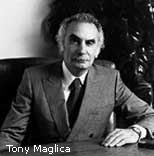 Anthony
Maglica, holder of hundreds of
patents and trademarks,
founded Mag
Instrument, Inc, in Los
Angeles in 1955, and
designed Mag-Lite
flashlight, which is now an
American product
icon, among 100 top products that "America makes best".
The Maglite products have been honored by the Japan
Institute of Design and the Museum for Applied Art in Germany.
Mag Instrument donated thousands of flashlights to aid in the
rescue efforts at the
World Trade Center and Pentagon
in 2001.
Born in New York, and as a child raised in Croatia, Tony Maglica has
plenty
of other interests which include also Zlarin, Croatia, where he
grew up.
Anthony
Maglica, holder of hundreds of
patents and trademarks,
founded Mag
Instrument, Inc, in Los
Angeles in 1955, and
designed Mag-Lite
flashlight, which is now an
American product
icon, among 100 top products that "America makes best".
The Maglite products have been honored by the Japan
Institute of Design and the Museum for Applied Art in Germany.
Mag Instrument donated thousands of flashlights to aid in the
rescue efforts at the
World Trade Center and Pentagon
in 2001.
Born in New York, and as a child raised in Croatia, Tony Maglica has
plenty
of other interests which include also Zlarin, Croatia, where he
grew up.
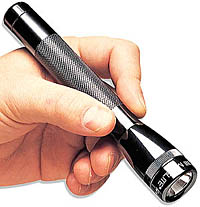
Agabekov SA is world's famous company seated in Geneva, Switzerland, dealing with exterior lighting design. Mr Youri Agabekov, the founder of the company, has Croatian roots: his father is Ladislav Žerjavić, from Hrvatsko Zagorje (village of Mače) near Zagreb. His products have been used to cover with soft lighting such buildings like (photos by kind permission of Mr. Youri Agabekov):
- the Vatican
- Louvre, Paris
- Bolshoi Theatre, Moscow
- Saint Michel Bridge, Paris
- Palace of Sponza in Dubrovnik, Croatia
- Villa Astra in Lovran, Croatia
- Guernica by P. Picasso, Paris
- College de France, Paris
- Kingston Bridge, London
- Siltassari and Pitkäslita Bridges in Helsinki (Finland)
- Museum Arqueologic de Catalunya and Cathedral of Barcelona
- Cathedral of Palma de Mallorca, Spain
- Queen's Residence "Parlement" in Holland
- Princely Palace of Monaco
- National Museum Singapore
- Palacio National Mexico
- Banque Européenne in Bruxelles (Belgium)
- National Bank of Greece in Athens
- Bank of Luxemburg, etc.
Mr Youri Agabekov is a Croat born in Russia, living in Switzerland (Geneva) and in Croatia (Zagreb). His company, Agabekov SA, has 80 representatives throughout the world. Here is the logo of the company devoted to his wife Branka:
Light fixture, United States Patent 4158221 by Youri Agabekov; some of his patents are also held in Japan
Ralph Tony Sarich (born in 1938) is an Australian Croat who developed the Orbital Engine in 1972. He is a recipent of several prestigeous ingeneering awards like Australian Inventor of the Year 1972, Sir Lawrence Hartnett Inventors Award 1972, Churchill Medal, British Society of Engineers 1987 and Clunies Ross National Science and Technology Award 1991. His parents are Croatian immigrants to Australia.
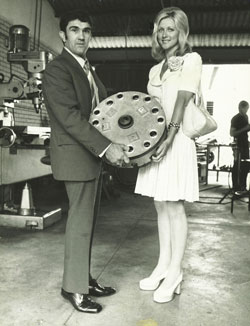
Miss Australia Michelle Downes
visited
Ralph Sarich's workshop
where she was shown his revolutionary orbital
engine in 1972.
Source business.thewest.com.au
Miroslav Radman élu à l'Académie des Sciences, France, 2002 (Biologie cellulaire et moléculaire)
Emilio Marin, associé étranger de l'Académie des Inscriptions et Belles-Lettres, 2003 (archéologie et histoire)
The service of buying parking tickets via mobile phones is today widespread worldwide. The service has been conceived and developed in Croatia.
Daniel D. Gajski, a hero of Computer Science. Prof.Dr. Franz Ramming wrote the following: "... Daniel Gajski did not just light the fire, he also fuelled it substantially. During the last three decades he achieved pioneering results. He was a principal contributor to the areas Silicon Compilation, High-Level Synthesis, and System-Level Design. ..."
Lit. [Janko Herak, pp. 79-86]
Zvonko Vranesic is distinguished Croatian-Canadian expert in Computer Engineering and a member of Canadian Chess Hall of Fame.
Branko Katalinic, professor of robotics at the Technical University in Vienna, Austira, has founded a prestigeous international association DAAAM in 1990. Among the past conferences, four of them have been organized in Croatia until 2009: in Dubrovnik, twice in Opatija and in Zadar. The DAAAM comprises more than fifty member states and hundreds of international organizations.
Davor Pavuna is distinguished expert in superconductivity. Jointly with Michel Cyrot , he is the author of the monograph Introduction to Superconducitivity and High-T_c Materials, published by World Scientific, 1992. Foreword to this book was written by P G de Gennes, Nobel Prize in Physics 1991. It has been used in about 4,000 university courses worldwide.
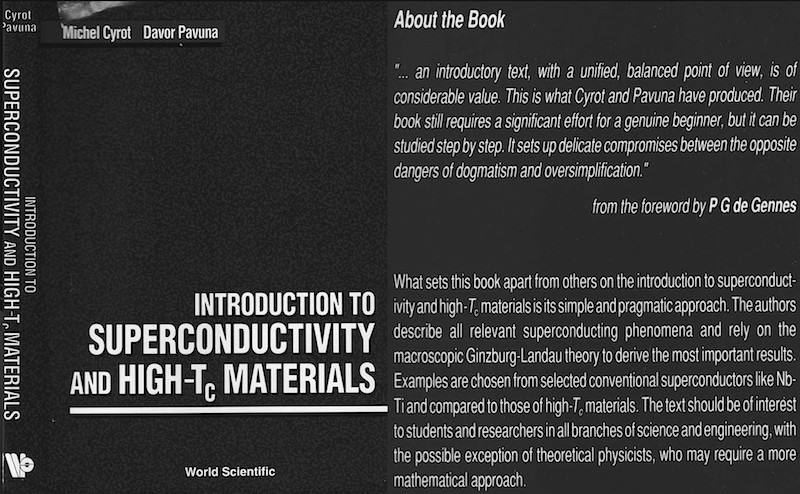
Jakša Cvitanic is Professor of Mathematical Finance at Caltech. Prior to joining Caltech in 2005, he held positions as Professor of Mathematics and Economics at USC and Associate Professor of Statistics at Columbia University. He is regarded as a leading expert in mathematical finance. Professor Cvitanic was born in the city of Split, Croatia, and completed his studies of mathematics at the University of Zagreb.
Drazen Prelec,
born in Croatia's capital Zagreb in
1955, completed his studies of Applied Mathematics at Harvard
University in 1978, and earned Ph.D in 1983 in Experimental Psychology.
He is one of the leading experts of Neuroeconomics, where pscychology
and neuroscience intersect. Professor Prelec investigates both the
development of normative decision theory and the exploration of the
empirical failures of that theory. He is employed at MIT, holding three
appointments: at the Department of Economics, Department of Brain and
Cognitive Sciences, and at the Sloan School of Management.
In 1997 Tomislav Uzelac, a student of the Universty of Zagreb, Croatia, invented the AMP Playback Engine, the first successful MP3 player. Two students from the University of Utah adapted it to work on Windows, and called it WinAMP.
Marin Soljacic is the author of the new Wireless Power Transfer, conceived in 1996. It attracted a substantial interest of the press (more than 200 articles in leading newspapers and radio-reports in numerous countries around the world, including: USA, Germany, Australia, Iran, India, Croatia, Greece, Spain, France, Italy, UK, Poland, Canada, the Netherlands, Thailand, Dominican Republic).
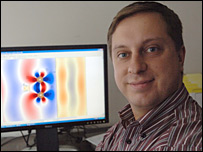
Marin Soljacic is a young Croatian physicist born in Croatia's capital Zagreb, where he completed his secondary school education. Dr. Soljacic is employed as researcher at the Department of Physics, Massachussetts Institute of Technology (MIT), USA.
Lit. [Janko Herak, pp. 181-192]
Nenad Ban is distinguished Croatian scientist, an expert in biochemistry and biophysics. He is recipient of the Heinrich Wieland Prize 2010 for his work on key structures in human fatty acid synthesis. According to Professor Konrad Sandhoff from Bonn, Germany, his work is "truly pioneering" and "great achievement". Professor Ban is working at ETH in Zurich, Switzerland. It is interesting that he and his group of young scientists had two publications in the same issue of "Science".
Nenad Ban has a great merit for solving the problem of structure of the ribosome. More precisely, he solved the structure of the so called large ribosome unit (Ban's structure). See[ Janko Herak, pp. 56].
Lit. [Janko Herak, pp. 53-58]
Zeljko Ivezic Croatian scientist and a leading expert in astronomy in the world
Lit. [Janko Herak, pp. 93-100]
Mario Juric distinguished Croatian astrophysicist in the USA
Anthony Grbic distinguished expert in metamaterials in the USA recipient of the prestigious 2010 Presidential Early Career Award for Scientists and Engineers
Silvija Gradecak Croatian scientist at MIT
speaking about Nano Structured Materials
Andrej Dujella, distinguished Croatian
mathematician, expert in Number Theory (Diophantine
equations and elliptic curves).
Marijan Ožanić: Velikani hrvatske znanosti
- Prof.dr. Vojislav Bego
- Prof.dr. Tomo Bosanac - čovjek koji je projektirao najveći generator na svijetu
- Prof.dr. Zlatko Plenković - osnivač Instituta R. Končar
- Prof.dr. Zvonko Sirotić
Paul L. Modrich of the Duke University 2015 Nobel
Prize for Chemistry is of Croatian descent
Contributions to Electrical Engineering and Computer Science by Croatian experts
One of the most famous Croatian scientists is Professor Balthazar, born in Zagreb in 1967:

Literature
- Janko Herak (ed.): Tesla, Prelog, Ružička... / Croatian
Extraordinary Scientists, Croatian-American Society, Zagreb 2021,
Croatian science, 15th-19th centuries
Croatian medicine
Croatia - an overview of its History, Culture and Science
